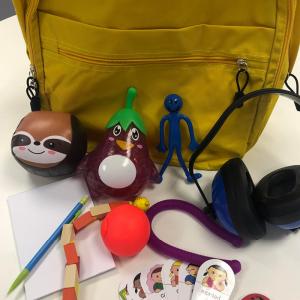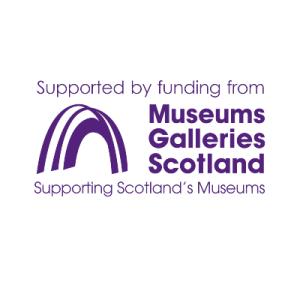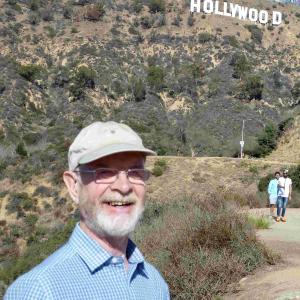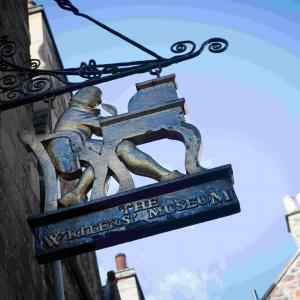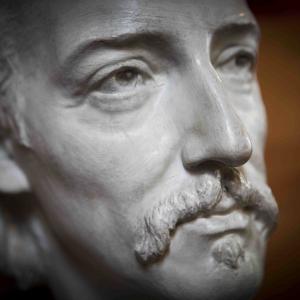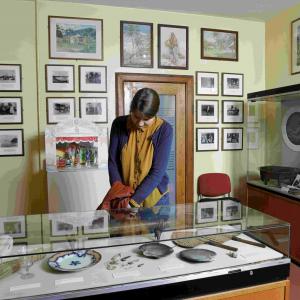News - Venues
-
During Women’s History Month 2024 we celebrate the life of Margaret Johnstone Reid who left Lauriston Castle in trust to the nation in 1926. In this blog we look at her life and discover the reasoning behind such a generous donation, which has been appreciated by visitors to Lauriston Castle for almost a century.
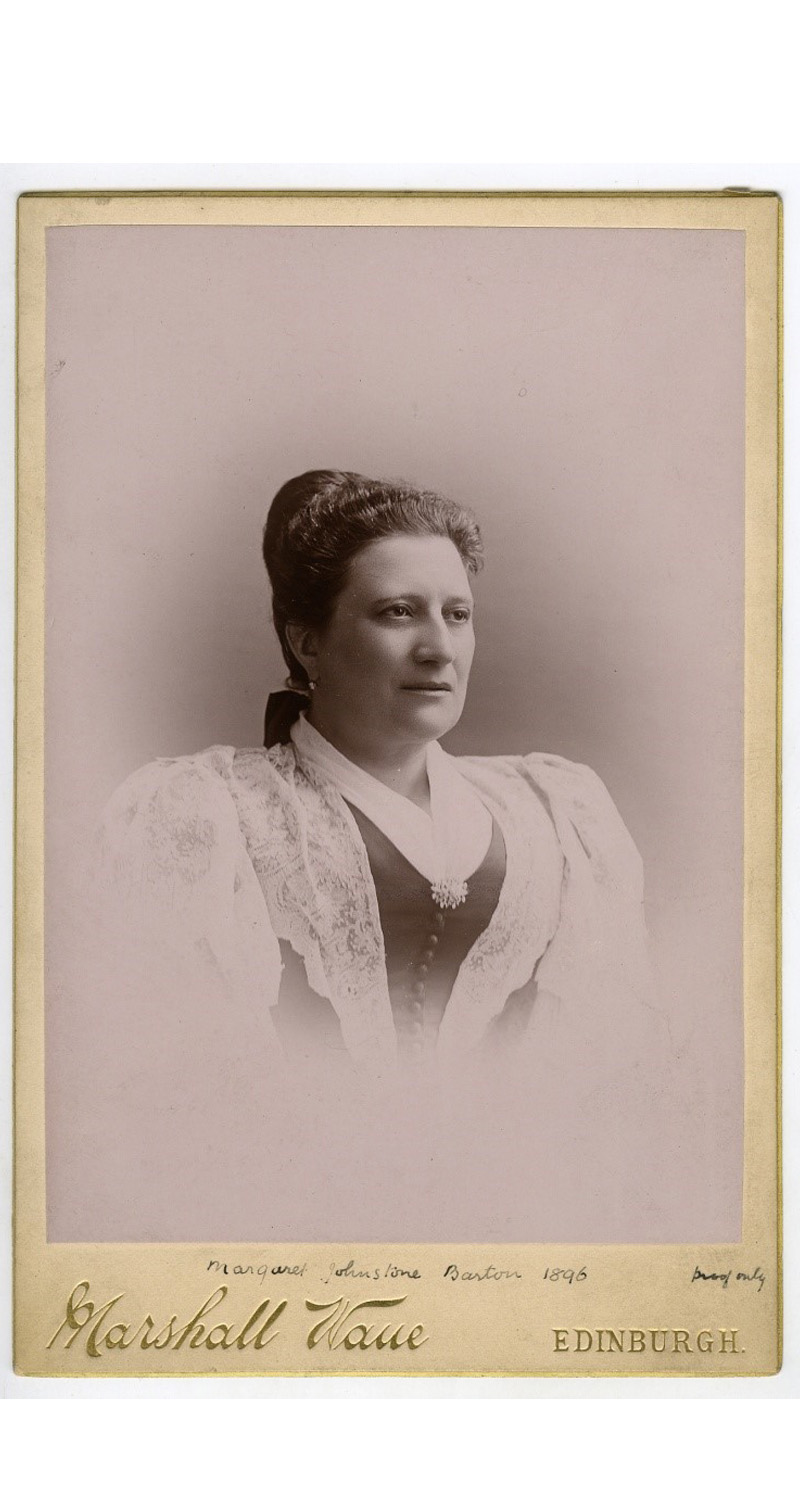
Early Life
Margaret was born in 1854, the youngest surviving daughter of six children into a working-class family. Her father came to Edinburgh to start a plumbing and sanitation business, Barton & Sons, which became a roaring success. Most of the New Town plumbing was installed by his company. While her older siblings went out to work, as the youngest daughter, Margaret’s responsibilities remained at home. She helped her mother keep house, as they had no servants. She eventually became her ill mother’s carer. When her mother died in 1877, the Barton’s position in society had changed and now in a middle-class family it would not have been deemed appropriate for her to work. Unsure of her path in life, Margaret chose two routes: travel and education.
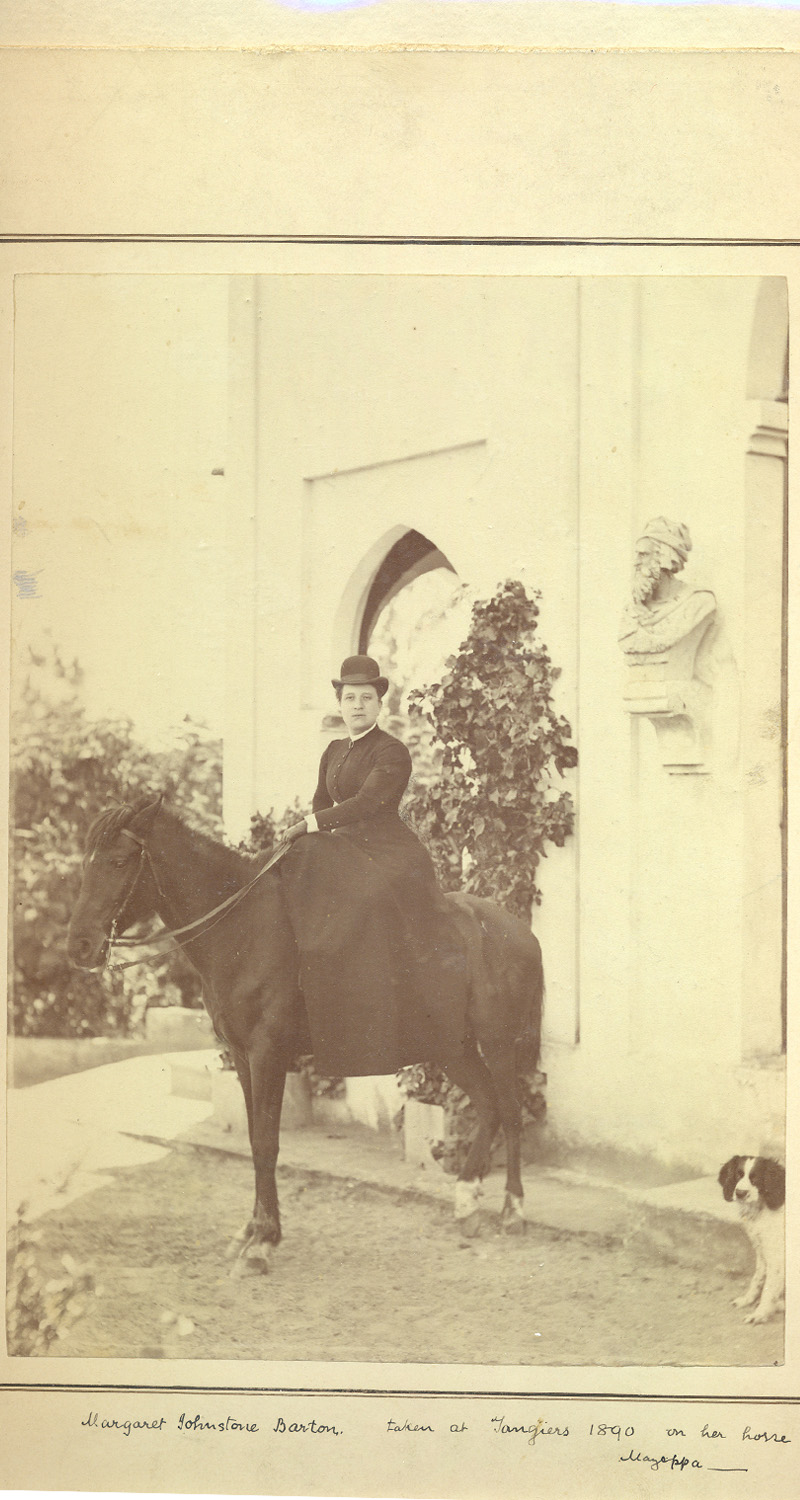
A Worldly Education
Margaret traveled far and wide, from visiting relatives in Canada to horse riding in Tangiers, exploring, collecting and learning as she went.
There were few opportunities for women in higher education at this time. However, in 1867 the Edinburgh Association for the University Education of Women was established. This allowed women to pursue classes and gain certificates at degree level. Women could not matriculate into university until 1892, or graduate with a degree until 1893. Margaret made the most of this opportunity and studied Physiology in 1886 along with 71 other women. One of whom was Elsie Inglis who qualified as one of the first female doctors in Scotland.
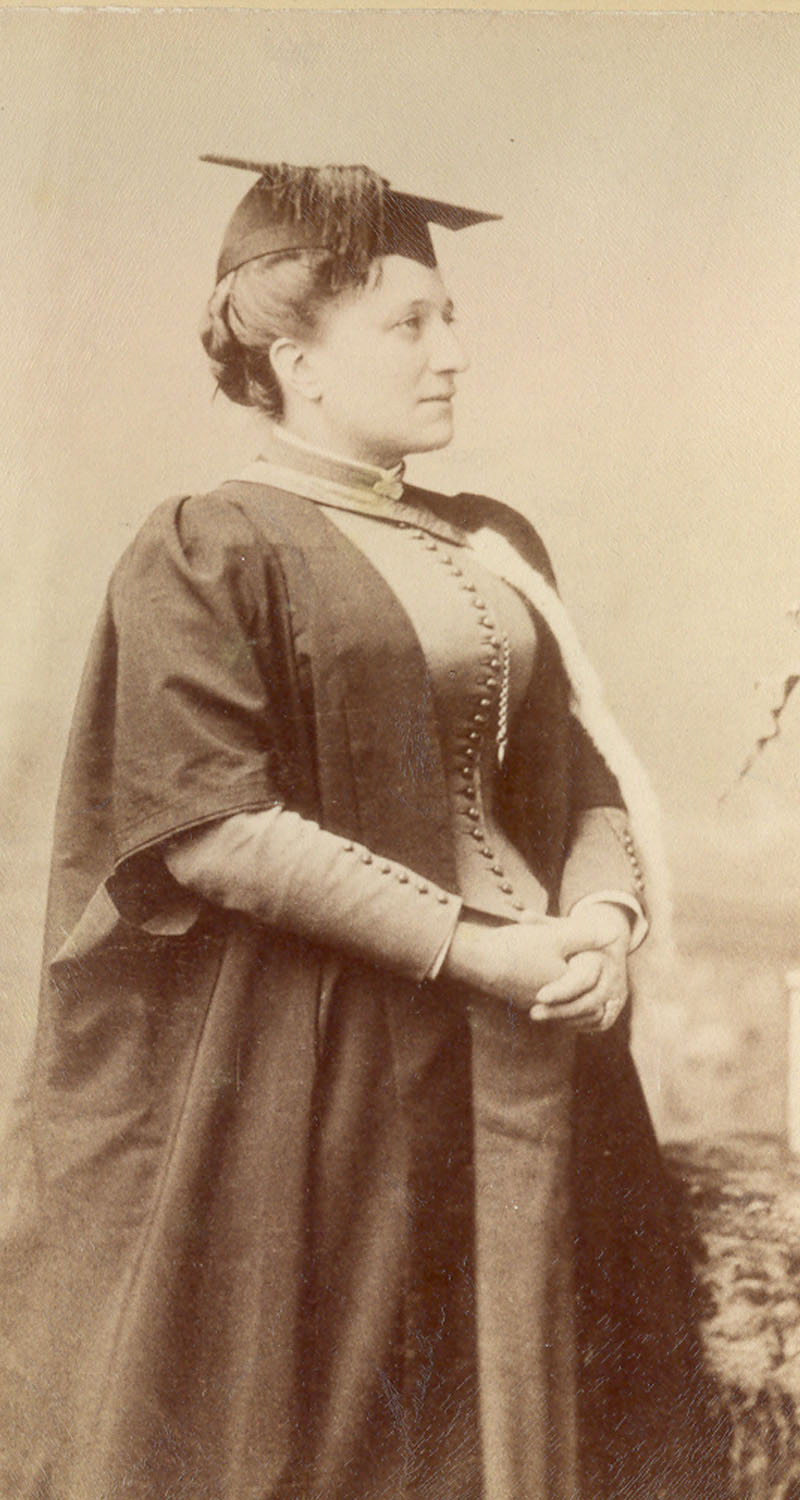
Married Life
Margaret married William Robert Reid in 1896 and they moved into Lauriston Castle in 1903 after the castle had been extensively renovated to their design. Electricity, central heating, interior plumbing as well as modern sanitary ware were installed. This was one of the first houses in the Cramond area of Edinburgh to possess such luxuries. The couple had no children of their own but enjoyed entertaining family and guests at Lauriston. They also traveled extensively throughout Europe collecting paintings, furniture and textiles for their home. During this period Margaret continued with her studies, becoming one of the early female members of the Edinburgh Photographic Society. A great deal of the photos we have are her own work. She could speak several foreign languages, a talent pianist and was a member of the Scoto- Italian society. In later life she was elected a fellow of the prestigious Society of Antiquities in Scotland.
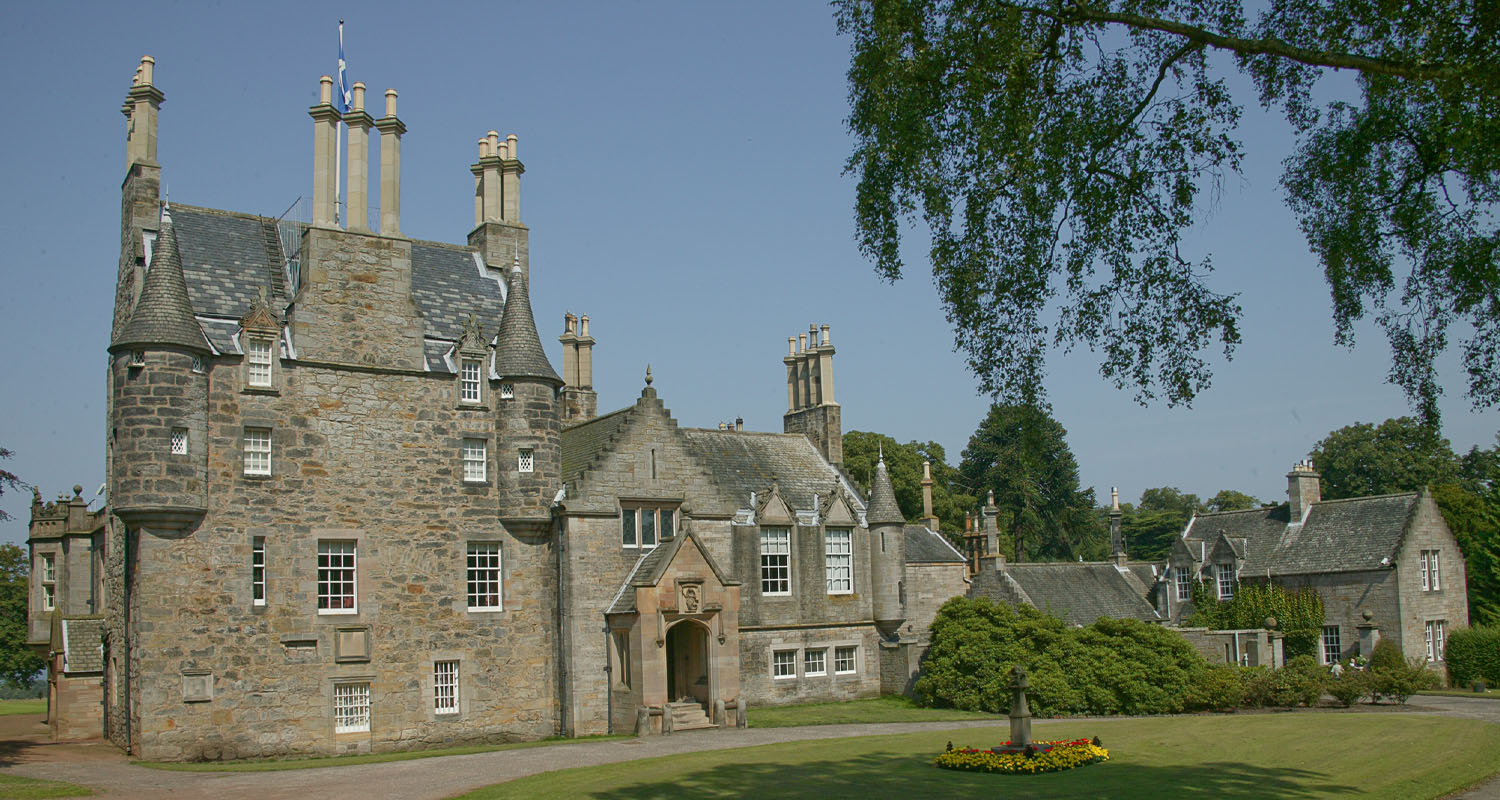
A benevolent employer
Both the Reids were known to be fair employers. Mrs Reid took a particular interest in the welfare of the female staff of the castle, some of whom left home at the age of 15 to live and work in the castle. These members of staff were paid a fair wage and enjoyed the same meals as the owners. Ever mindful of the importance of education, she sent her cook, Ann Nichol, on courses to the recently established Edinburgh College of Domestic Science, better known as "Atholl Crescent". Mrs Reid even had her housekeeper’s headstone inscribed with the words ‘a faithful friend’.
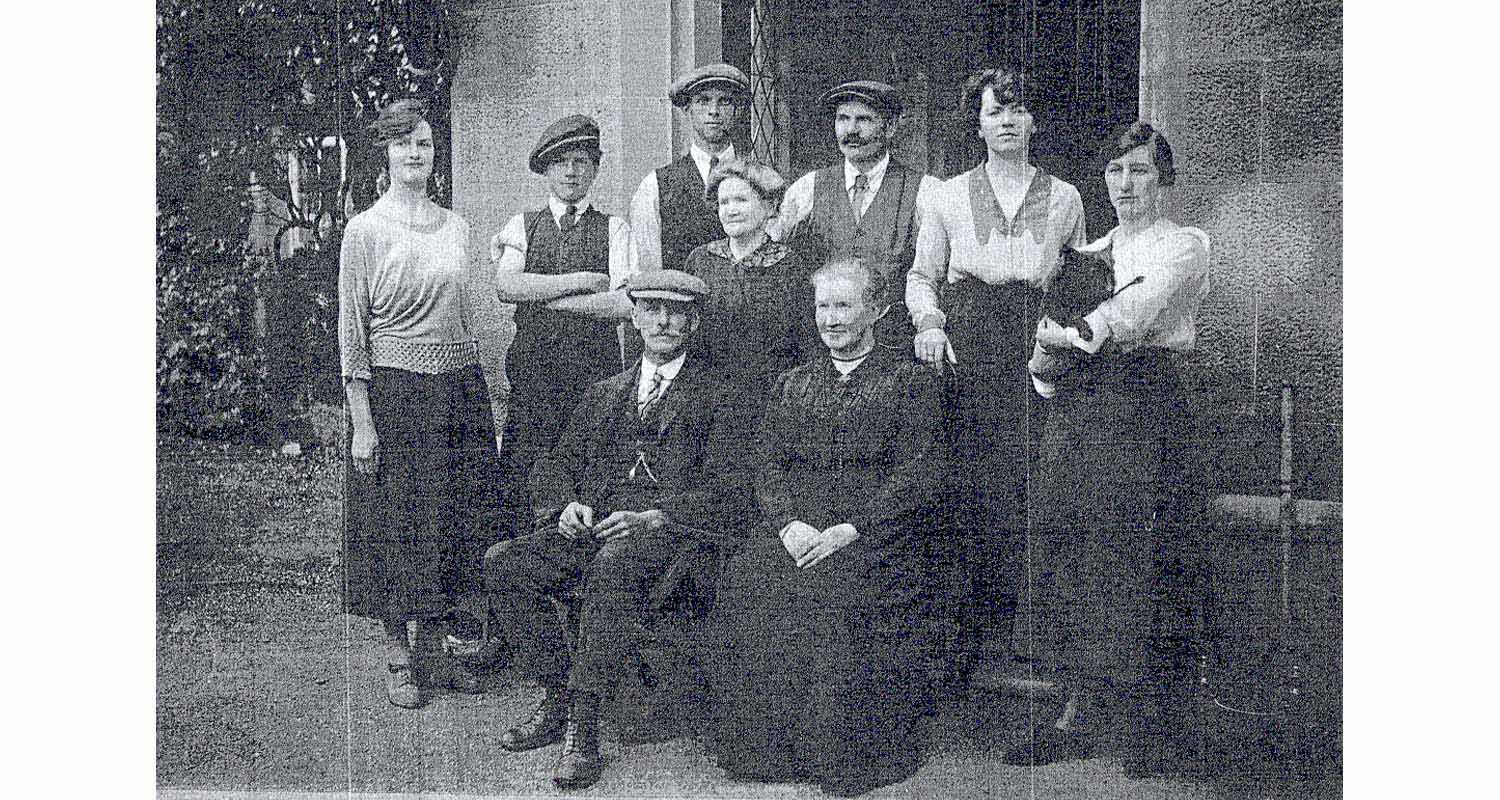
Legacy
Margaret continued to live in the castle, with her housekeeper, Annie MacKay, as her companion after William Reid died in 1919. Before his death, the Reids agreed they would leave the castle, its contents and grounds to the nation. Margaret died in 1926 when the castle for the “intelligent education of the public taste”. It was important to her that future generations could visit the castle to learn about life in the Edwardian era. A “capable” and “strong willed woman with ideas of her own”, her legacy is supported today by a diverse events programme including lectures, family learning activities, access days and specialised tours. We continue to research woman at Lauriston and look forward to sharing their fascinating stories.
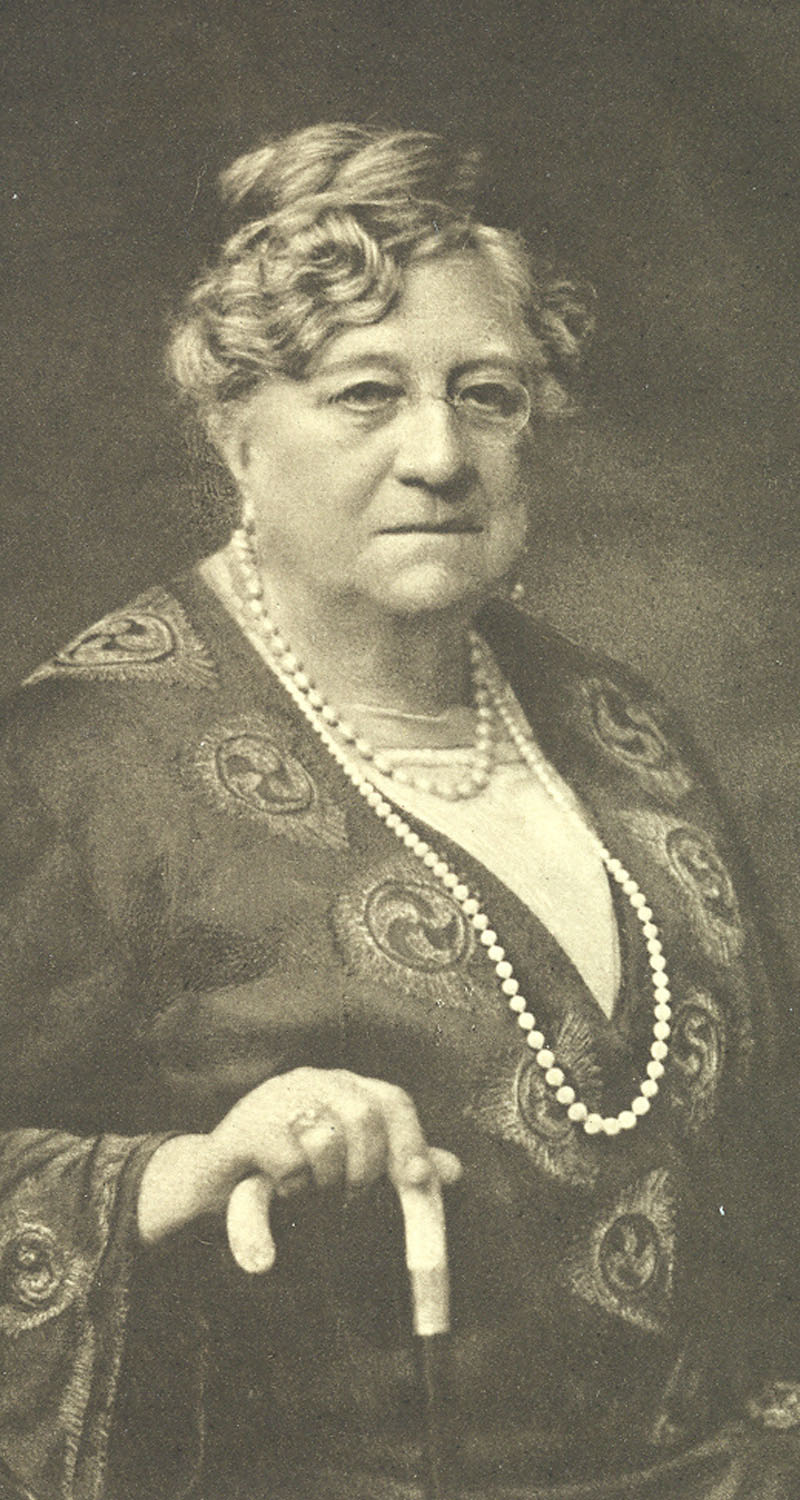
-
How are you celebrating Burns Night this year? Perhaps a ceilidh? Or maybe just settling down to a yummy plate of haggis, neeps and tatties accompanied by a wee dram or two? You could even visit the Writers’ Museum to see many items from our Burns collection on display!
Museums & Galleries Edinburgh’s Burns collection includes books, manuscripts and portraits as well as some more unusual items. Here are three Burns-related objects in our collection that you might not normally associate with the Bard!
1. Temple of the Bard
The Burns Monument on Edinburgh’s Regent Road was built in the 1830s. It was paid for by public donations by the great and the good in the city, but also from around the world. At the time it was being built the Monument was known as the Temple, and intended to house a grand marble statue of Robert Burns by the sculptor John Flaxman. You can see this statue today in the spectacular grand hall of the Scottish National Portrait Gallery.
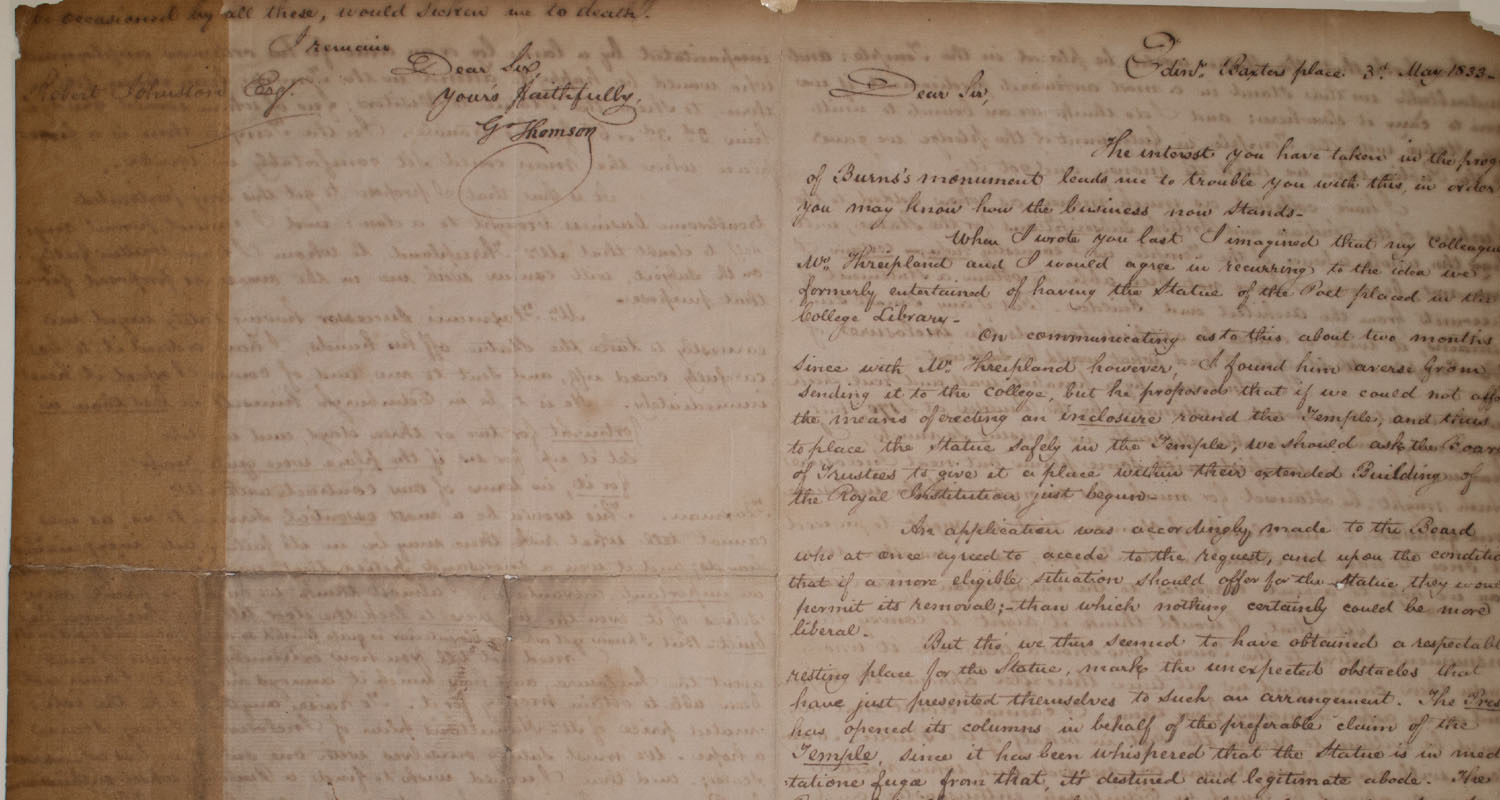
This letter is written by George Thomson, a celebrated Edinburgh music publisher and friend of Robert Burns. He is updating a colleague, Robert Johnstone, about the progress being made to raise funds to have a small wall around the Monument. It seems there were calls for the statue to be removed from the Monument and housed in an alternative setting, but Thomson fears the public outcry of such a move. He says that the editor of the Observer has got wind of these rumours and has protested “the severing of the Statue from the Temple is a thing that must not be thought of”.
Thomson goes on to write about the future of the Monument. While it was built with public money, there were no funds in the 1830s to ensure its upkeep. But he assumes an easy solution, relying on the people of Edinburgh to come to the rescue “many years will elapse before repairs are needed, and when needed there will always be found in Edinburgh enthusiastic and generous Spirits ready to contribute for the preservation of the monument of Burns”.Today, the Edinburgh & District Burns Association continue to advocate for the Monument, the poet and his vast legacy.
2. A jug of witches
Arguably the best known of Robert Burns’ poems, Tam O’Shanter is a tale full of sorcery and witches. In the poem, old Tam is riding his horse Meg home after an evening’s carousing at the inn. He spies a coven of witches dancing and can’t help himself shouting out. A crazy chase ensues, with Tam riding for his life followed by all manner of terrifying creatures. Just as he reaches a bridge, the witch Nannie grabs Meg’s tail. But witches can’t cross water, and so Meg gallops over leaving her tail in Nannie’s hand. This scene has been reproduced on countless paintings and trinkets, and here we see it on a stoneware jug made by Andrew Buchan & Co. of Portobello.
The witchy jug was made using a ceramic mould. Wet clay was pressed into two parts of the mould, and joined together to form the jug. To make sure the potters could reproduce as many jugs with the same pattern, they first made a ‘master mould’ from which they could keep making new moulds.
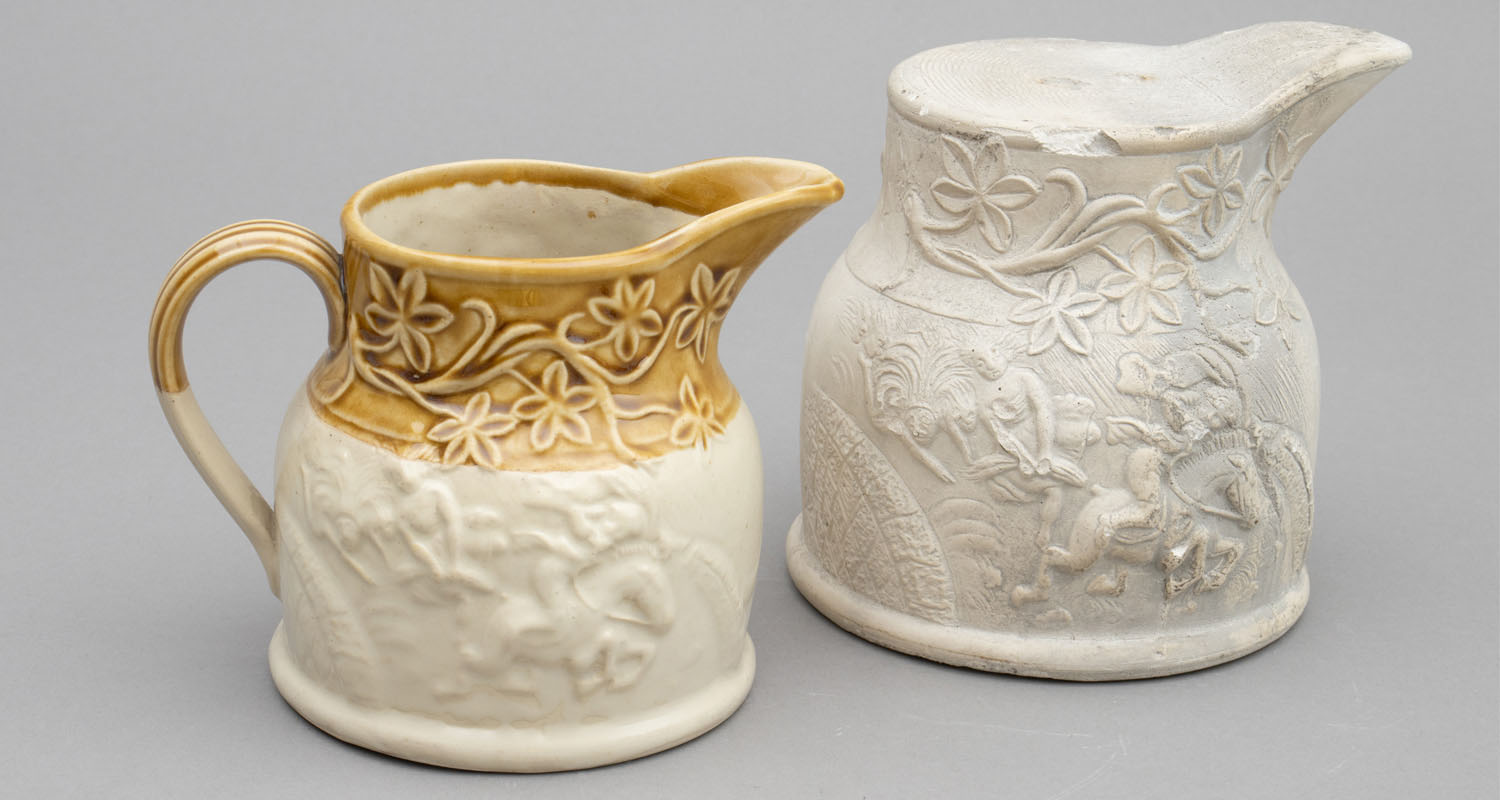
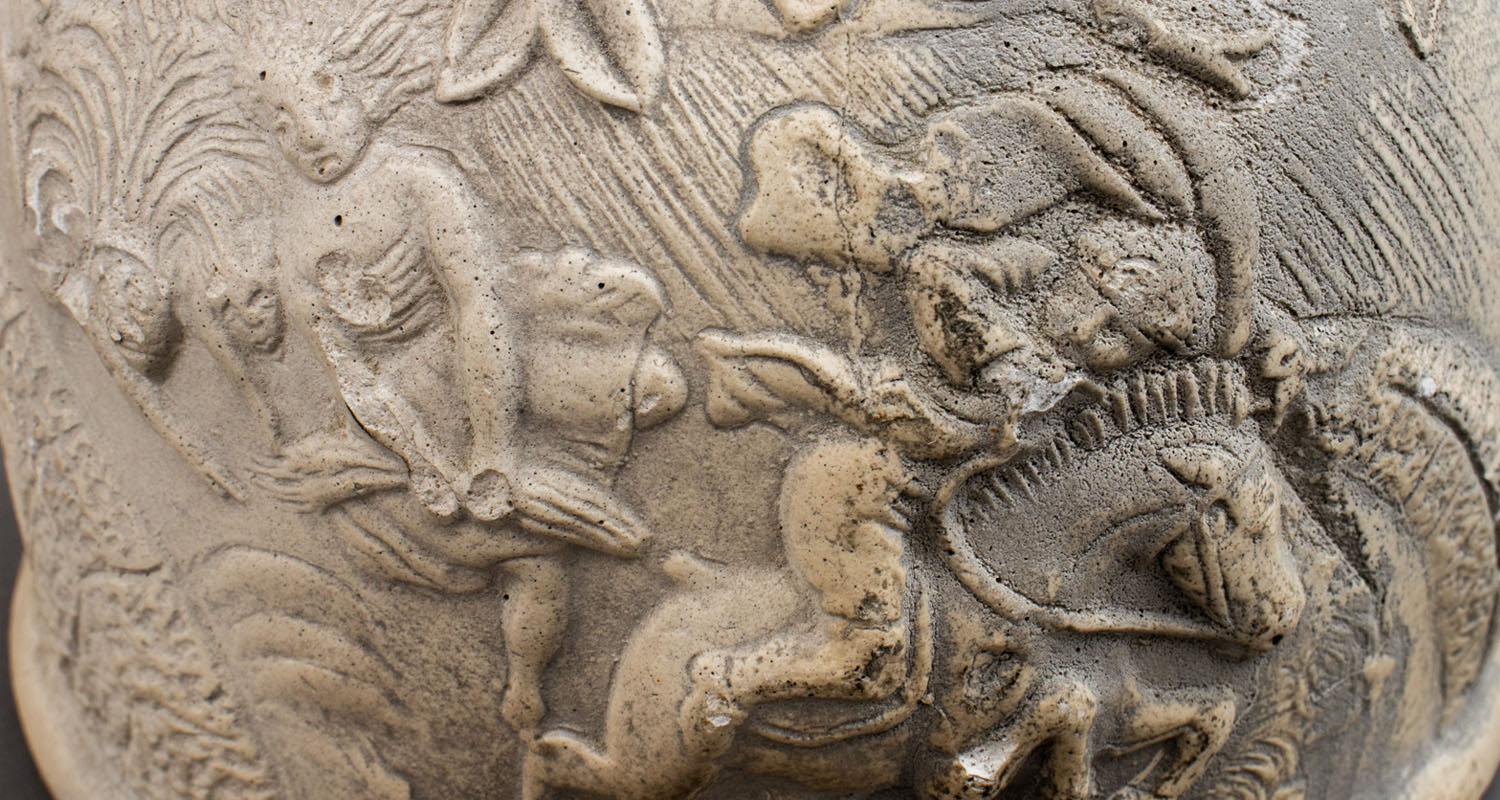
3. Coming home to Scotland
2009 was a big year for the millions of people around the world with Scottish ancestry. The Year of Homecoming, a year long programme of events, was organised on behalf of the Scottish Government to attract visitors from overseas who could trace their origins back to Scotland. There were ceilidhs, mass clan gatherings, piping competitions and Highland games.
2009 was also the 250th anniversary of the birth of Robert Burns. This was a clever ploy; Burns is known all over the English-speaking world and anyone looking into their Scottish ancestors would no doubt be familiar with his work.
Promoting the event to an international audience was key to get the message out, and this special edition Coca Cola bottle is full of Scottish symbols, but the Bard features prominently! Here we see a version of the much-reproduced portrait of Burns by Alexander Nasmyth, now at the National Galleries of Scotland.
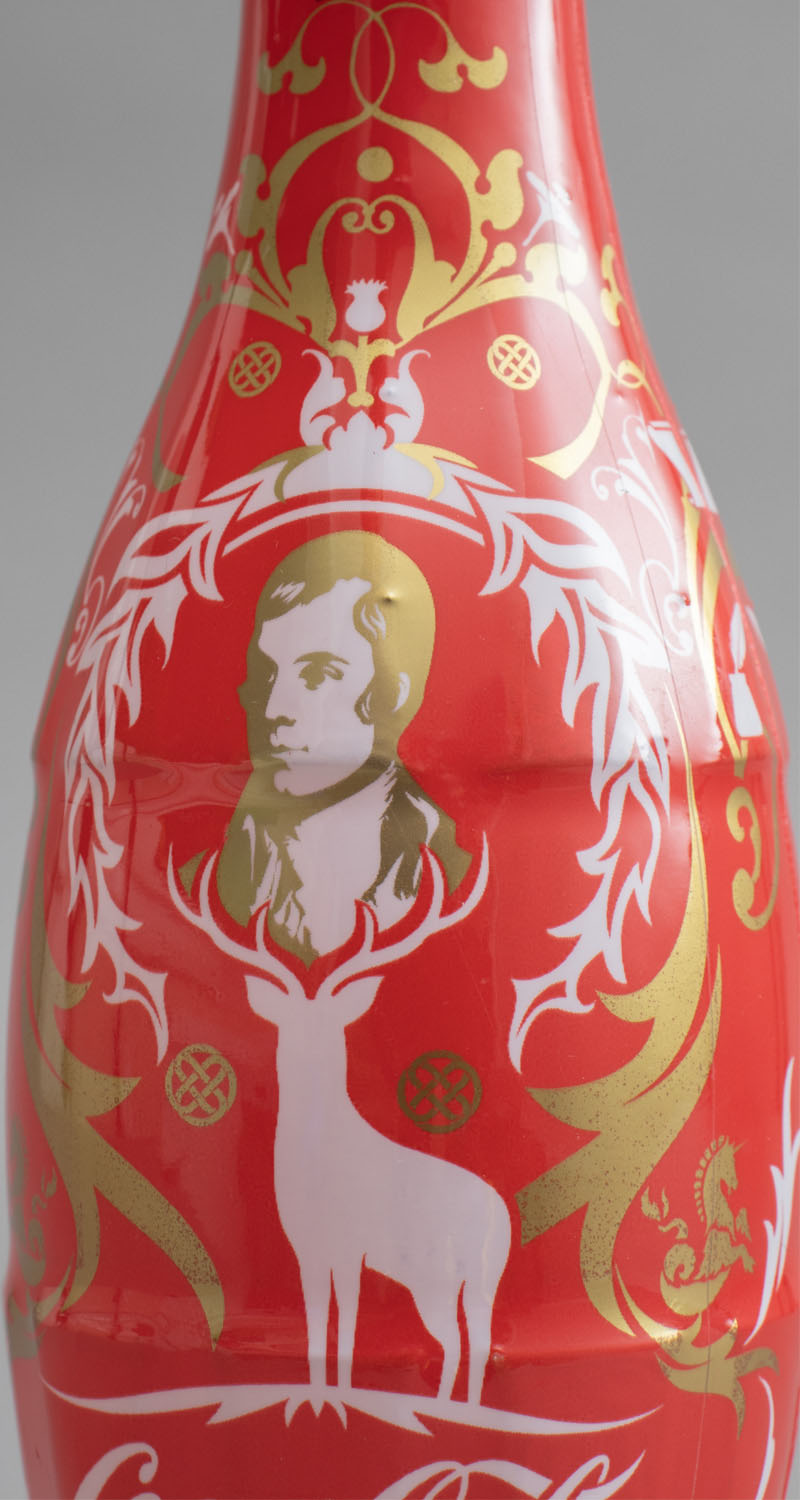
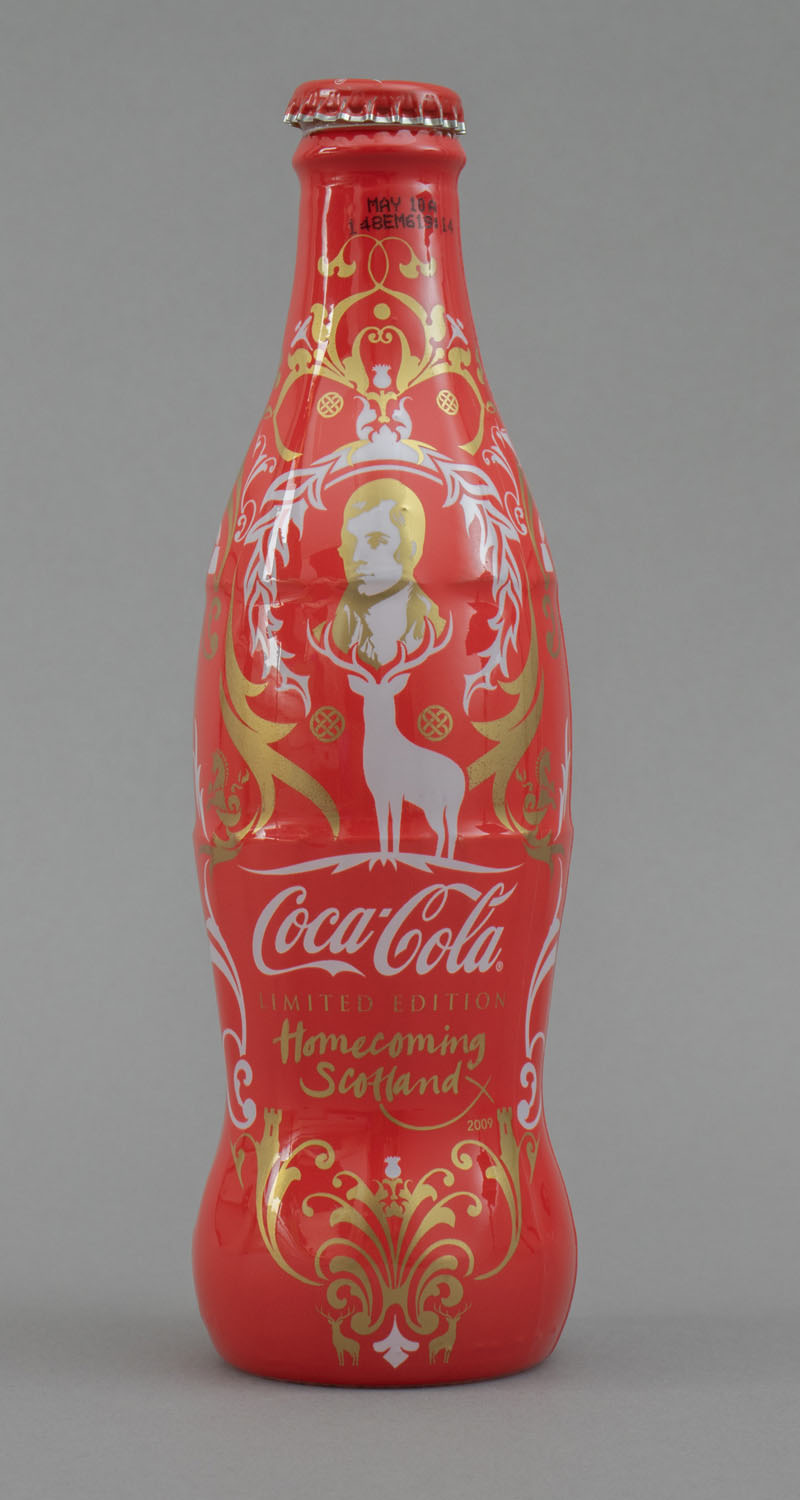
-
2min Article
Our vision is to mainstream the range of services for all autistic visitors, their families and carers, across all ages in the City of Edinburgh. We have launched our first sensory backpack at Lauriston Castle for families to borrow and use during their visit. The pack contains:
Ear Defenders
A range of Fidget Toys
Notepad and Drawing Pencil
Emotion CardsWe will be developing these backpacks in all our remaining venues in the coming weeks/months.
Please ring Lauriston Castle on 0131 336 2060 in advance of your visit to book out the backpack.
-
1min Article
We need your help! Our new panda friend has just arrived here in our store, but he needs a name. Our team have been thinking really hard, but we can’t find the perfect one. Can you? If you have an idea for a name, please complete the entry form in the museums and slip it into the box provided. If you’re our winner, we’ll contact you with the news, and the new name will be displayed with the panda in the museum.
Visit the museum on the Royal Mile before Sunday 30 April for a chance to win. Our lucky winner will also receive a smaller panda friend to take home as well!
Good luck!
Anyone wishing to enter the contest must fill out the slip next to the box, and provide a valid name and contact details. All entries will be securely stored. The winner will be picked on Thursday 30 April, and be notified within 24 hours. The prize will be 1x small panda, value £30. The prize will be available for collection only, at a time and date convenient to the prize winner. The panda’s new name will be displayed with it in the window of Museum of Childhood. The prize winner will, with proper permissions from parents or guardians as applicable, be photographed at the museum with the panda and have the photo placed on our social media channels. We reserve the right to alter the date of the decision in the event of unforeseen circumstances. Any alterations to the draw date will be announced via social media and on the site. Please note that for GDPR purposes, all entries will be stored in a locked box until the end of the contest, and confidentially destroyed after the winner has been contacted.

-
2min Article
Tickets for April to September 2023 events programme on sale now
Over 50 events including atmospheric film screenings, ghost stories, murder mysteries, sketching workshops, lectures, picnics and theatre offer locals many opportunities to enjoy the Edwardian manor and gardensAs the spring sunshine approaches, Lauriston Castle has launched an action-packed season of activities and events for all the family.
Members of Edinburgh Living History got into the spirit ahead of the Easter Shenanigans planned for the weekend and rolled some easter eggs they had painted.
Edinburgh Living History are our multi award-winning team, who interpret the history of the castle in a variety of entertaining ways in Edwardian costume - bringing to life the history of the house. On Sunday 2 April visitors can walk through the Castle on a special tour watching the performance unfold.
Elsewhere, running from the Castle Courtyard, there are free drop-in events all day including an Easter Trail with a chocolate surprise at the end, our Egg and Spoon Race, which you can bring your own hard-boiled egg to decorate and then race in, or egg rolling, with a prize for the egg that rolls the furthest. Visitors can also make their own Easter Crown, flower or pinwheel and share online using our giant frame! You can also craft a clay spring tile, paint a cermaic tile, make papier mâché eggs or explore with one of our garden activity books.
This year’s lecture series kicks off in April and across 15 mornings explores an incredible range of subjects with experts in their field covering topics from Earth Day and Scottish Art in the 1920s to Occupations of Old and Mary Queen of Scots.
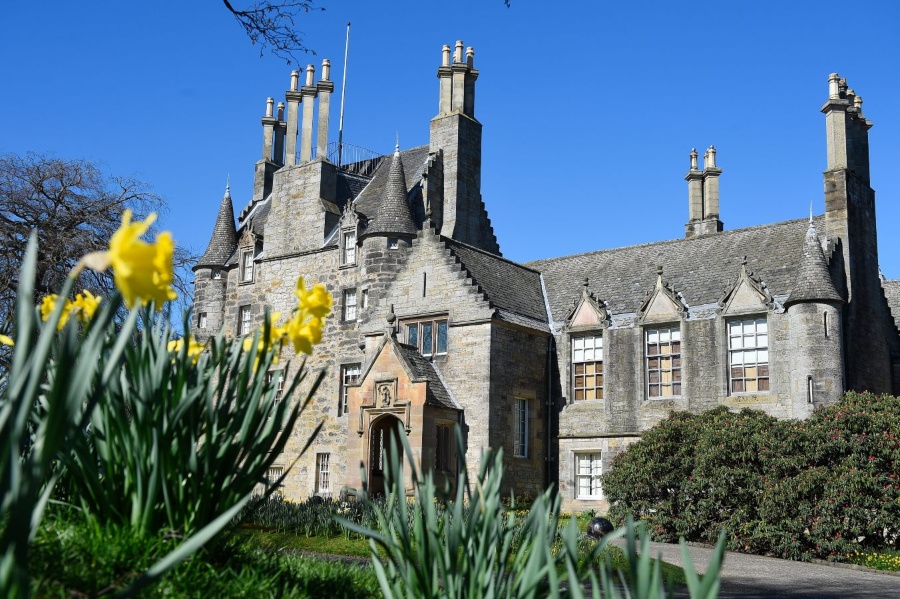
Family days out come in the form of Castle Bug Tour, World Bee Day and the return of the popular Lauriston’s Castle Teddy Bear’s Picnic.
Enjoy a special evening screening of Downton Abbey: A New Era at Lauriston Castle on Saturday 10 June as part of the atmosphere series of films at the Castle.
The Castle’s costumed performances are popular. This year spring sees A Lauriston Castle Murder Mystery or you can drop into the lives of the people in the Castle in 1911 as members of the household debate the issues involved in the campaigns for Votes for Women in A Guid Caus. In September, in Our Soldiers Need You, it’s 1916 and a member of the local fundraising committee has come to the castle to speak to everyone about how they can help with the War effort.
A series of workshops for adults and families draw on the seasons and the setting for their inspiration, and this year visitors can try their hands at Printmaking Inspired by Nature, making Summer Mosaics and many more covering expressive drawing, painting and sketching.
With over 50 events from April to September varying from workshops to murder mystery nights, Lauriston Castle has many reasons to return throughout the season.
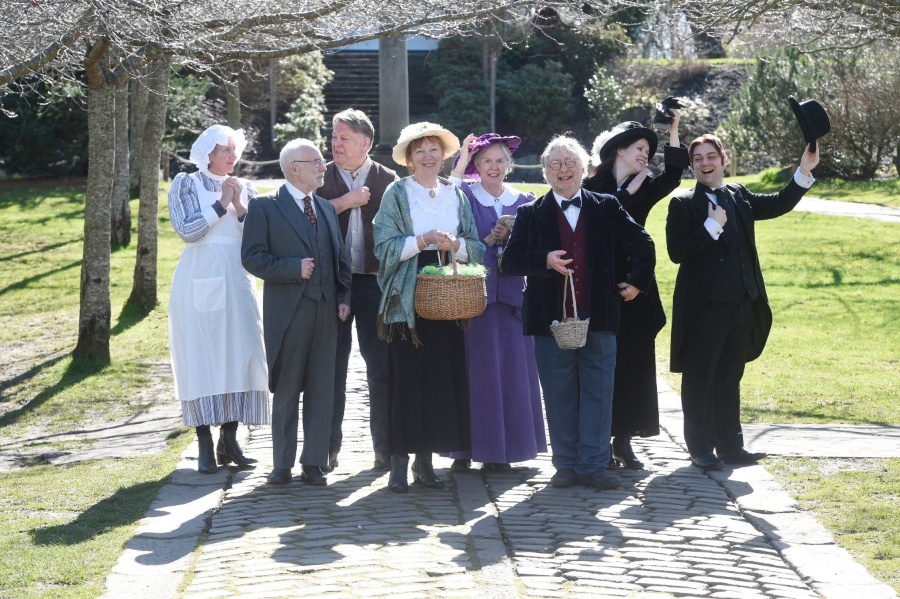
-
1min Article
Earlier today, Royal Mile Primary School P7s took part in an activity morning at the Writers’ Museum to mark World Poetry Day - becoming the latest poets to recite their works at Makars' Court.
This year marks 25 years since Makars’ Court was officially inaugurated by the late lain Crichton Smith in August 1998 and pupils learned all about the famous names featured in the Capital’s evolving national literary monument.
Pupils got an exclusive tour of the Writers’ Museum, took part in an art project and recited poems they had written in class inspired by the works of those they had been learning about.
Inspired by Robert Louis Stevenson’s Kidnapped and Treasure Island stories, an audience gathered for the pupils' recital of fantastic pirate-themed poems.
Culture and Communities Convener, Councillor Val Walker, said: 'This has been a wonderful event to mark both World Poetry Day and a big birthday for our Makars’ Court. It’s fantastic to see the creative works immortalised in the Court still inspire today and we now have new poems from pupils to add to our collections.
You can find Makars' Court next to our Writers’ Museum and both provide an opportunity for visitors and residents alike to explore the very best of Scotland’s writers. I would encourage people to rediscover the wonderful works beneath their feet in Lady Stair’s Close as well as our Writers’ Museum which celebrates the lives of three giants of Scottish Literature – Robert Burns, Sir Walter Scott and Robert Louis Stevenson.'
Alanna Harrison, P7 teacher, Royal Mile Primary School, said: 'Primary 7 joined millions of children before them in their discovery of the timeless adventure of Treasure Island. The tale gripped the imagination of the class, inspiring them to write their poems and discuss themes of betrayal, greed, bravery and mystery. I hope that the experience today will encourage them to seek out more adventures in reading.'

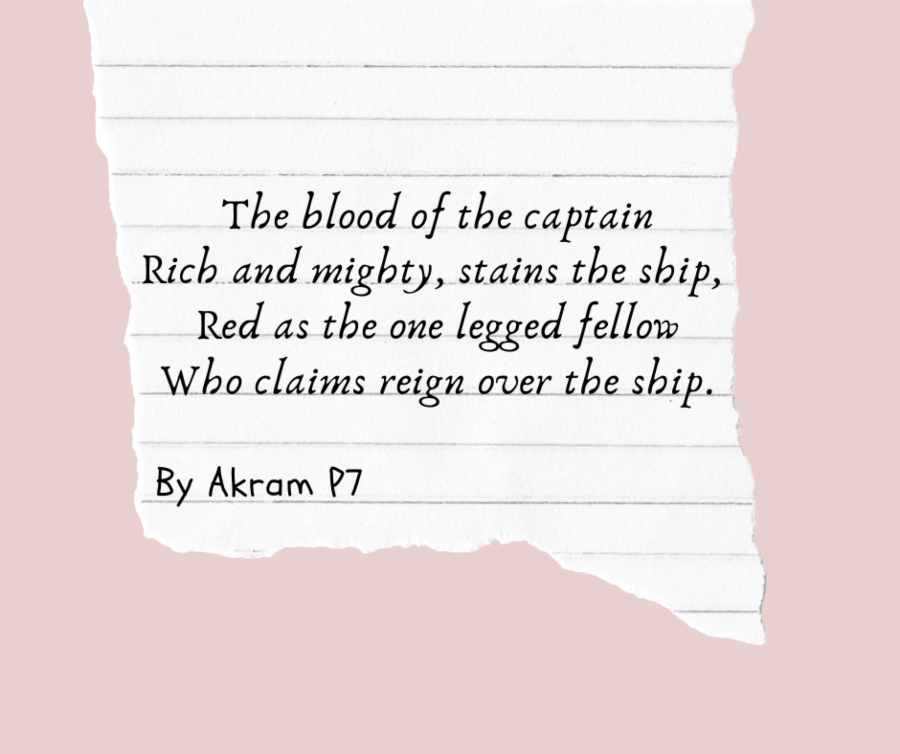
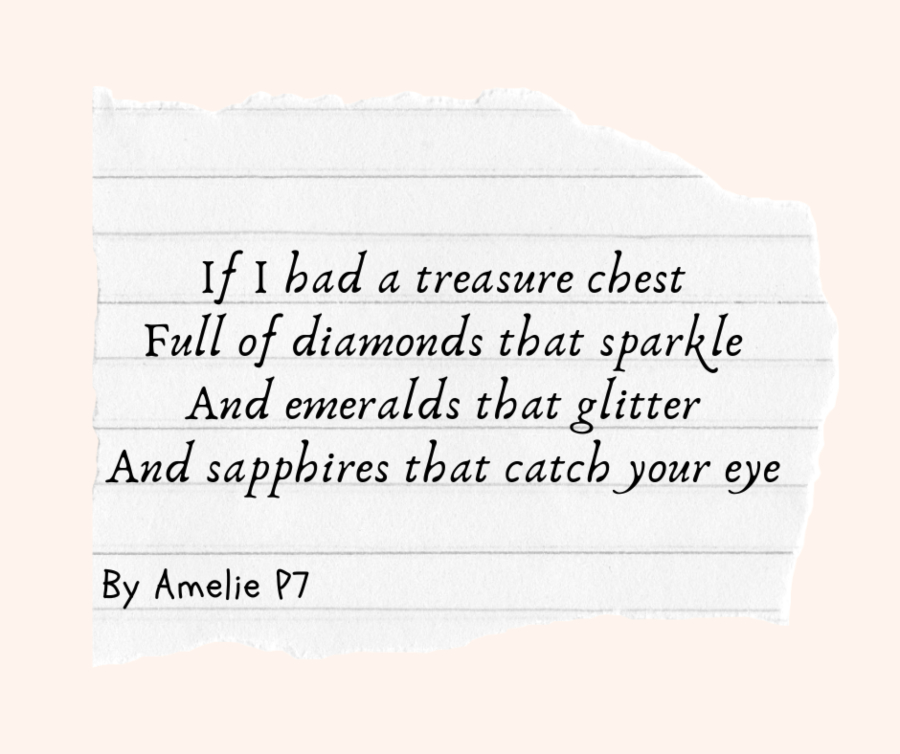
-
3min Article
Makars’ Court, an evolving national literary monument, has been described as the Scottish equivalent of Poet’s Corner at Westminster Abbey and is located beside the Writers' Museum in the courtyard of Lady Stairs Close.
Lauded Scottish Gaelic poet and songmaker Màiri Nic a’ Phearsain (Mary MacPherson; 1821-1898), most commonly known as Màiri Mhòr nan Òran, or ‘Big Mary of the Songs’ has been added to Makars’ Court, where the nations most esteemed literary figures have been celebrated since its creation in 1998.
Described as ‘a towering presence in Gaelic culture’ (The National, 2021), Màiri Mhòr has taken her rightful place at Makars’ Court where she has a memorial flagstone inscribed with her name and the lines:
Cuimhnichibh gur sluagh sibh
Is cumaibh suas ur còir
(Remember that you are a people / And stand up for your rights)
(From The Highest Apple/An Ubhal as Àirde (Francis Boutle Press, 2019), p. 522).
Despite not discovering her latent literary talents until after her 50th birthday, Màiri Mhòr is lauded as one of the most important songmakers in Scottish history. Her work unflinchingly chronicled the Highland Clearances and land struggles, one of the most profound eras of socio-economic and political unrest in the nation’s history.
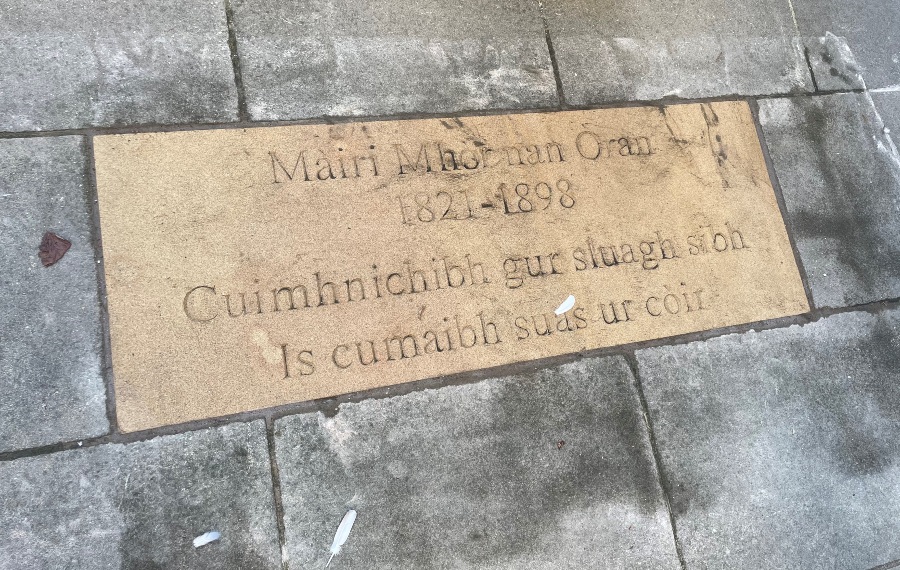
George Bruce, OBE, MA (1909-2002) also has a memorial flagstone inscribed with his name and the line:
The sea trembles - voiceless
It is the rare moment
when a word is sought.
Hailing from Fraserburgh in the north-east of Scotland, Bruce’s poetry references his family’s seafaring heritage in the herring trade and his own upbringing on the North Sea coast.
In addition to his extensive work as a poet, Bruce worked as a BBC producer for over 20 years and on his retirement was appointed as the first Fellow in Creative Writing at the University of Glasgow, alongside similar posts in the USA, and a Scottish Australian Writing Fellowship. In 2000, he received an honorary Doctorate from his alma mater, the University of Aberdeen, to add to another from Wooster College Ohio.
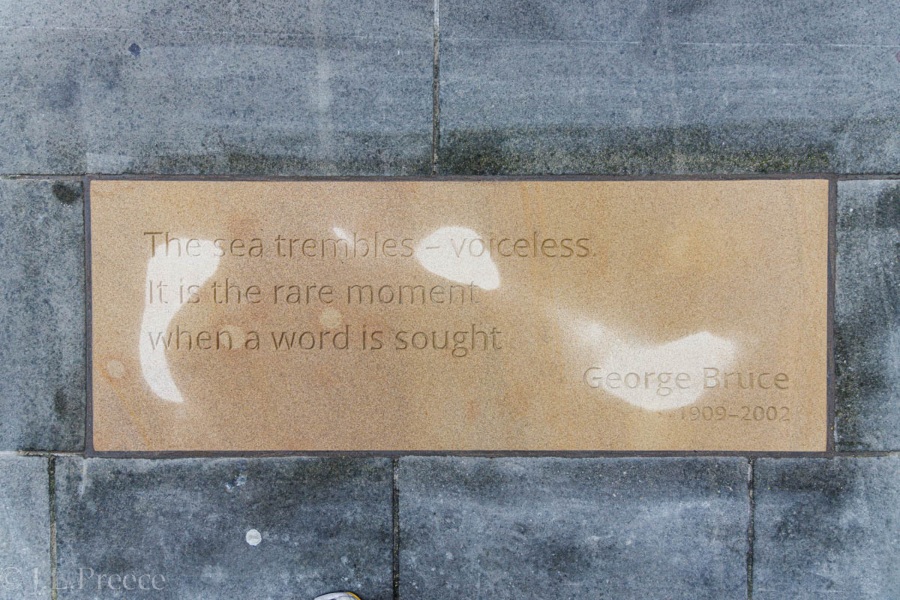
When visiting Makar's Court look out for quotes ranging from the 14th century John Barbour to Sir Walter Scott, Rabbie Burns, Robert Louis Stevenson and Dame Muriel Spark.
-
3min Article
Built in the 1590’s with substantial additions dating from 1820’s, Lauriston was not founded on the profits of slavery or colonialism, but there are connections to slavery and colonialism within its history of ownership and within some of its collections. This blog looks at some of Lauriston’s past owners.
John Law
John Law was one of Lauriston’s most controversial owners. He was a brilliant mathematician and was also a gambler, but having killed a man in a duel, he was imprisoned. He escaped to France where his mathematical and financial skills led to him becoming Controller General of the Finances of France. Law, along with the Duc d’Orleans, established the Company of the West to develop French colonies in Louisiana – also known as the Mississippi Scheme. The Royal Bank of France, which Law established with the Duc d’Orleans, had exclusive trading rights in the East Indies, China and the South Seas.
John Law’s father, William Law, a wealthy Edinburgh Goldsmith, had died in 1684 having purchased Lauriston in 1683. Although he may have intended to live in Lauriston, his illness and death so soon after the purchase of the castle means that the Law family are unlikely ever to have lived there, instead remaining in their town house within the city.
John, as his eldest son, inherited Lauriston but sold his interest in it to his mother to pay his gambling debts in 1693. He inherited Lauriston for a second time in 1707 following the death of his mother, but was only able to return to Britain in 1721 after a Royal pardon had been issued for his part in the death of Edward Wilson in the duel that they had fought some 27 years earlier. It is unlikely that Law ever returned to Lauriston or to Scotland.
But although John Law has no direct connection with Scottish or British Colonialism, as France’s most influential financier of the early 18th century, though the development of French Colonies in Louisiana and through the National Bank’s monopoly on trade in the East Indies and China, he was certainly an instrumental figure in French colonial history and is a figure who has a strong family link to Lauriston Castle.
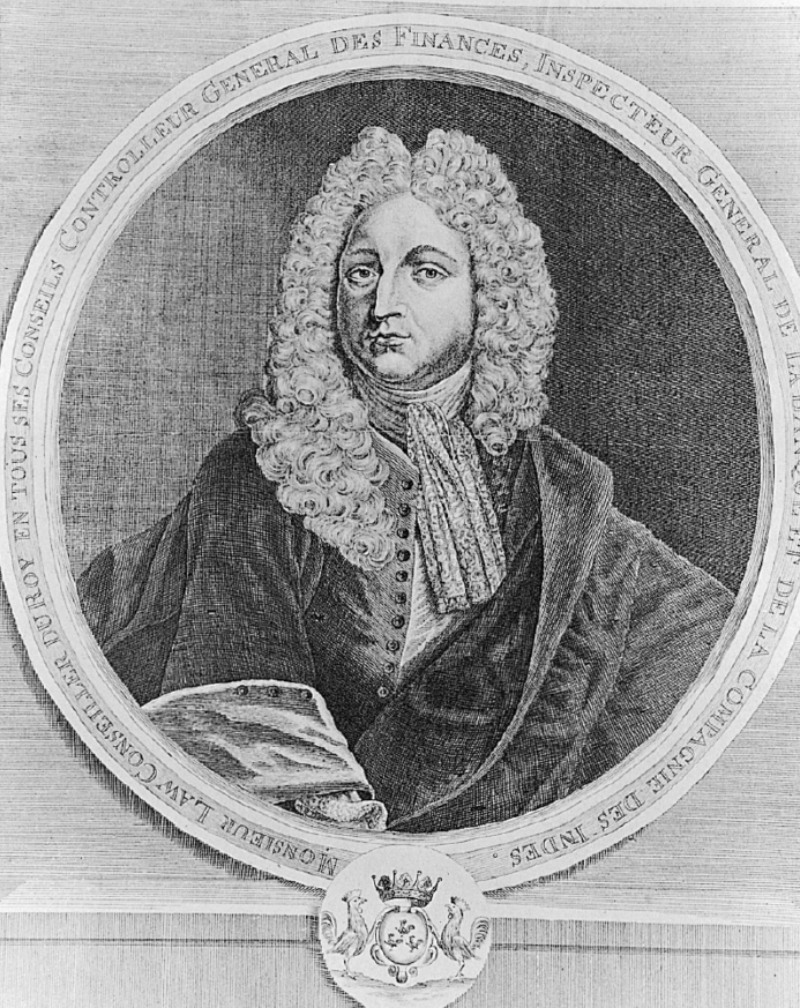
Margaret Gordon MacPherson Grant
A much more direct link between one of Lauriston’s past owners and wealth created through the proceeds of colonialism came in 1859 when Margaret Gordon McPherson Grant of Aberlour purchased Lauriston Castle for her father.
Rachel Land of University College London has researched Margaret Gordon MacPherson Grant and her family’s links to slave derived wealth.
Margaret Gordon MacPherson Grant was born on April 27th, 1834 in Aberlour, Banffshire. She was the second child of Alexander MacPherson, a physician, and his wife, Annie Grant MacPherson. Her older brother Alexander died in India in 1852 leaving Margaret heir to her uncle’s fortune. Alexander Grant had amassed a considerable fortune through his ownership of slave plantations in Jamaica. He also traded as a merchant and was a member of the Jamaican Legislature, only returning to Britain in the 1820s. When slavery was abolished in 1833, he profited from the British government’s compensation scheme for his lost ‘property’ – his slaves and other business assets – for which he was given £24,000, which now would be the equivalent of over £2 ¾ million. Aberlour house was built on the profits of his plantations and the compensation he received as a slave owner. He probably never lived there as he preferred to live in London, where he maintained his business as a successful merchant in the West Indies until his death in 1854.
Alexander Grant had made his niece his sole heir on the proviso she changed her name to Grant and so Margaret Gordon MacPherson Grant, at the age of twenty, inherited the bulk of his wealth, along with Aberlour house and his estates in Scotland and Jamaica valued at a total of £300,000. This was a huge sum, the equivalent of nearly £36 million today. He also left her an outright settlement of £20,500 payable at his death and an annuity of £1,500.
Margaret moved into Aberlour House and immediately started improving and extending the building adding bay windows and a ballroom. Her agents, Milne & Co in Elgin managed her Jamaican estates. Aberlour House was the main residence for Margaret and her parents, but after the death of her mother in 1858 she purchased Lauriston from Charles Halkett Cragie Inglis in May 1859 for £8,875. Although it was Margaret who purchased the castle, it was her father who mainly lived there as Margaret spent much of her time at Aberlour House or in London. But Margaret did spend some of her time at Lauriston with her father, and the 1861 census lists her as a resident rather than a visitor, along with her father and 12 live-in servants. Margaret was interested in cattle breeding and dairy work and it is believed that the building which now houses the public toilets was built as a model dairy. This is the only tangible evidence of her time at Lauriston as the castle was sold to Thomas Macknight Crawfurd for £11,400 in 1871. It has also been suggested that the wall fabric on the walls in one of the tower rooms may date from this period of ownership, though it more probably dates from the 1870s.
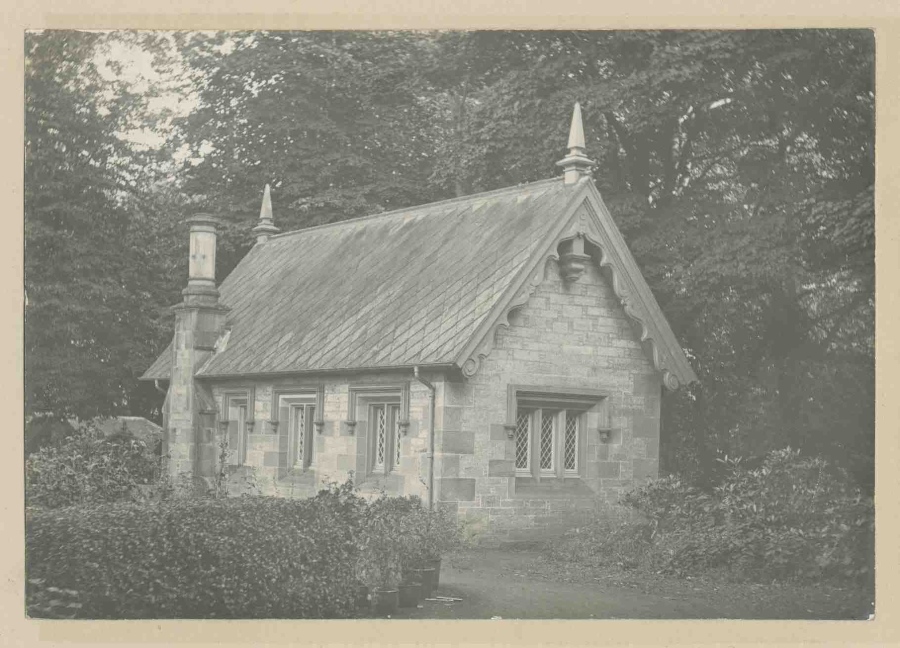
Thomas Allen
There seem to be no other obvious colonial connections with other former owners. Although it has been interesting to read some of the Caledonian Mercury reports from the period running up to the abolition of slavery. Thomas Allen, who owned Lauriston in the 1820s was the owner of the ‘Caledonian Mercury’ newspaper. The newspaper largely reports on the debates around the subject of abolition without additional comment so you cannot necessarily infer that the newspaper or its owners had a particular standpoint on the issues discussed. It included ones from the ‘Edinburgh Society for the Mitigation and Ultimate Abolition of Negro Slavery’. The society, as its name would suggest, was for gradual abolition of slavery. There were some dissenting voices at the meetings advocating more immediate emancipation, but the overall focus was to advocate gradual abolition, amelioration of conditions for slaves and compensation for plantation owners. It may simply be that newspapers of this period reported directly and did not add their own opinions, so the opinions expressed within the Caledonian Mercury may not be Thomas Allen’s own, but it can also be argued that failing to take a stance can also result in giving reported opinions tacit approval and perhaps Allan also agreed with this view, or at least did not want to be seen to go against wider public opinion held in Edinburgh at this time.
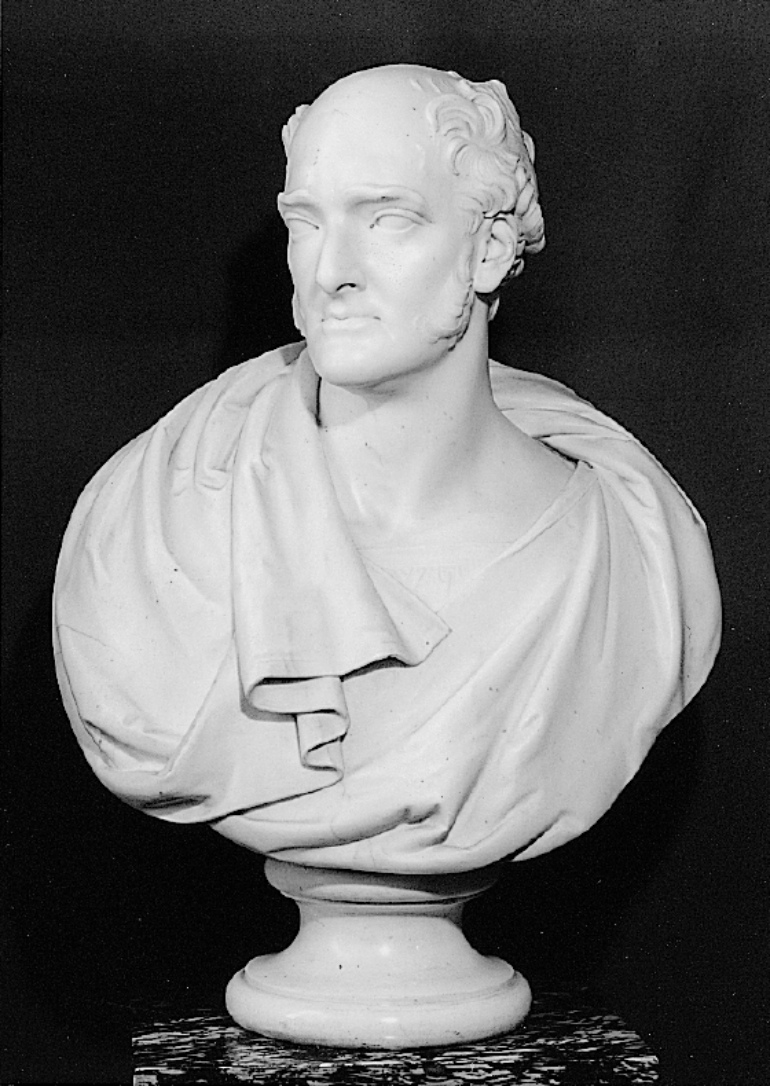
-
2min Article
As COP26 gets underway in Glasgow this week, we are delighted to announce that we’ve received funding from Museums Galleries Scotland to run a project to highlight and address the climate emergency at the Museum of Edinburgh.
Think local, act global is focused on bringing new life to the Museum of Edinburgh’s historic courtyard and will aim to improve the biodiversity and carbon capture potential of the soil in the space. We’ll be working with the Applied Negative Emissions Centre (ANEC), a carbon removal consultancy, to add a mixture of plants and herbs, and to add biochar to the soil to improve its fertility and ability to store carbon. A carbon capture education bench will be created using reclaimed materials and will include a bug hotel and planters, in addition to a climate change-themed mural that will be co-designed and painted by local school children.
We will also work with school groups to create an exhibition focused on climate change which will include objects from the museums’ collections and artworks created by school children from across Edinburgh. The exhibition will display items related to environmental themes such as plastics, upcycled items, protest banners and food packaging.
Museums & Galleries Edinburgh is committed to becoming a sustainable museum service. Through this project we aim to engage with community groups and visitors and empower them to respond to the climate emergency.
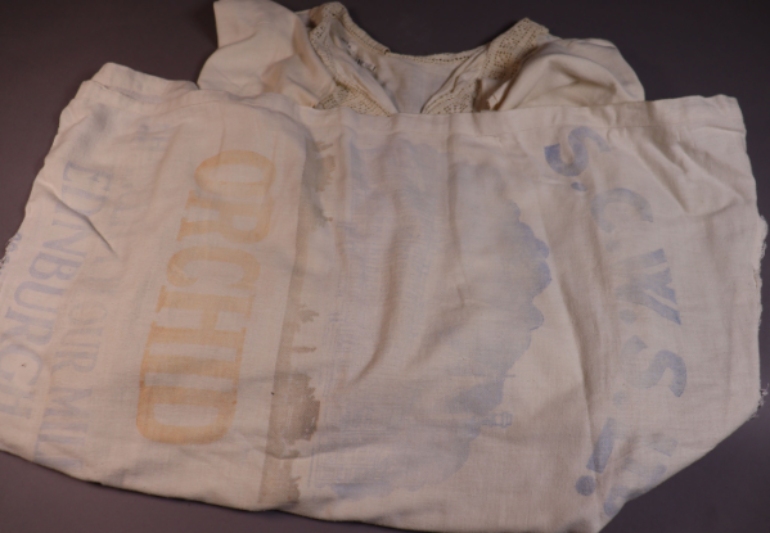
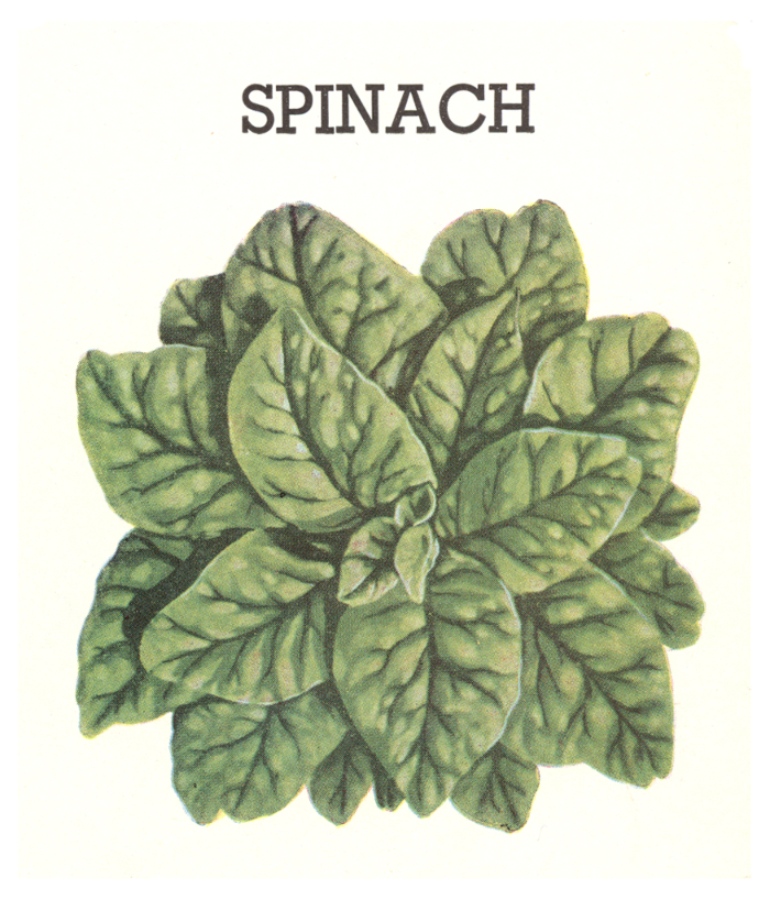
-
The Amateur Immigrant
The Writers’ Museum celebrates the lives of three giants of Scottish literature- one of whom is Robert Louis Stevenson. Each year Stevenson’s life is celebrated with a week of events culminating on his birthday, 13 November. As a result of the ongoing pandemic the museum is temporarily closed and events have moved online this year, so we asked one of our Writers’ Museum volunteers, and current chairman of the Robert Louis Stevenson Club, Mitchell Manson, what his favourite Stevenson book is and why.
In normal times I spend one afternoon a week as a volunteer in the Stevenson Rooms in The Writers’ Museum engaging with the many visitors all about Robert Louis Stevenson, his life and writing.
My interest in him stems from a journey I made to California as a 22-year old student in 1959. I did not at the time realise that I was following very much the same journey as a 29-year old Stevenson had made in 1879 when he left home and family without informing them where he was off to.
He was pursuing a married woman whom he had met in France and become infatuated with, Fanny Osborne. Fanny had brought her three children with her from America, one of whom tragically died while she was in Paris attending an Arts Studio. She, however, had had to return to America to rejoin her husband in California. Stevenson responded by acquiring a ticket from the Anchor Line shipping office in Hill Street, Edinburgh before joining the SS Devonia at Greenock on the Clyde. From there he crossed the stormy North Atlantic as a steerage passenger to New York.
Now this is where originated my interest in Stevenson and why when asked, “What is your favourite Stevenson Book?”, my immediate answer is “The Amateur Immigrant”, rather than “Treasure Island” or “Kidnapped”, books I had read in my youth. Stevenson wrote an account of his journey all the way from the Clyde to the old Spanish Pacific Capital of California, Monterey which lies south of San Francisco on the American west coast. However, largely on the insistence of his father, the book was not published until after Stevenson’s death in 1895.
My journey began in Southampton where I boarded a Cunard Liner (SS Queen Mary) that would take just 5 days to reach the mouth of the Hudson river, New York and the tip of Manhattan as compared to Stevenson’s 10 days.
From there Stevenson and I both caught a train from Pennsylvania Street Station which took us on the trans-continental railway (which had only been completed in 1869). In Stevenson’s case it was a wood-burning steam locomotive with very primitive tourist class accommodation. For me it was a diesel powered ‘Streamliner’ with comfortable carriage and separate dining-car.
Three days after leaving New York, Stevenson remarks: “I have never been so dog-tired as that night in Chicago. When it was time to start, I descended the platform like a man in a dream.” The remainder of the journey for us both involved crossing the central plains of America, “It was a world almost without feature; an empty sky, an empty earth; front and back the line of railway stretched from horizon to horizon, like a cue across a billiard board.”
Then finally (for Stevenson 11 days since leaving New York, for me only five) ,“we were at Sacramento, the city of gardens in a plain of corn; and the next day before the dawn we were lying upon the Oakland side of San Francisco bay…..the fog was rising over the citied hills of San Francisco; the bay was perfect – not a ripple, scarce a stain, upon its blue expanse; everything was waiting, breathless for the sun.”
That for me more or less completed the journey although I was to spend the next two wonderful years at the University of California.
Stevenson would continue from Oakland onto Monterey where he met up with Fanny. Later he was to suffer serious haemorrhaging of the lungs from which Fanny nursed him back to health. In return Louis with his legal training helped her file for divorce from Sam Osborne.
The couple later married in San Francisco, spent their honeymoon at a deserted silver mine at the head of the Napa valley (which Stevenson describes in “The Silverado Squatters”) after which, with the help of a cash gift from home, they returned to Scotland. However, following the death of Stevenson’s father they were to return to America one last time in 1887 before settling on the island of Samoa in the South Pacific. Seven years later Stevenson would suffer a sudden cerebral haemorrhage and died aged forty-four.
Written by Mitchell Manson, Writers’ Museum volunteer and Chairman of the Robert Louis Stevenson Club.
Museums & Galleries Edinburgh are hosting a variety of online events for Robert Louis Stevenson Day, details of which you can find here.
For more information about the Robert Louis Stevenson Club and other events taking place for Robert Louis Stevenson Day, please visit: http://robert-louis-stevenson.org/rls-club/
-
Edinburgh Art Festival announce full details of this year’s Platform exhibition, the festival’s annual showcase supporting artists in the early stages of their careers to make and present new work. The festival is delighted to once again partner with City Art Centre to present Platform: 2020 from 31 October to 29 November.
Selected from an open call by artist Ruth Ewan, and curator, Sophia Hao (Cooper Gallery, Duncan of Jordanstone College of Art & Design), four artists based in Scotland – Rabindranath A Bhose, Mark Bleakley, Rhona Jack and Susannah Stark – have been supported to create new work which will be presented in a group show at City Art Centre.
Edinburgh Art Festival, along with its sibling August Festivals, made the difficult decision earlier this year to cancel their 2020 edition due to the ongoing pandemic. Despite the many challenges faced across the cultural sector, the festival is very pleased to continue to support artists during this difficult time by presenting the delayed 2020 edition of their Platform series, which usually forms a key element of each Edinburgh Art Festival programme, showcasing new work for four artists in the early stages of their careers.
Each of the artists has been working over recent months to develop new work for their presentation in Platform: 2020. The exhibition brings together four new bodies of work that include sound installations, textile and sculptural works, print-making, film, performance, and text-based works. Across each of the artists’ individual practice, a number of themes and approaches are particularly resonant for our present times including: the aesthetics of the collective, the intense vitality of ‘being together’ in space; strategies for survival; and the importance of the sense of touch.
Rabindranath A Bhose draws on queer modes of living and relating as expansive strategies for survival, and will create a new large-scale vinyl drawing for the exhibition space. Composed of signs, and words, the drawing references autobiographical and mythological elements. The drawing will be closely related to a text written during the recent lockdown which will be presented both in print form and in audio form read by the artist’s lover.
Artist and choreographer Mark Bleakley is developing a new work using movement, print and video to develop a playful exploration of the poetics of weight and gravity and their relation to collectivity; asking how these are used by, with or against live bodies, and emphasising the vitality of being in a space together, and how this is manifest. The process of this new work draws upon film documentation from a movement workshop devised with collaborators, and a range of found footage relating to ideas of grounding, groundlessness, and inertia.
Rhona Jack is developing a series of large-scale textile based sculptural works, taking the form of stitched hangings, woven rugs and elements of soft sculpture. Reconstructed and crafted from a patchwork of recycled scrap fabrics and items of clothing, the work draws attention to our relationship to textile production, consumption and waste; presenting consumerism in opposition to the personal narratives that we put upon clothes made in their millions.
Susannah Stark’s work consists of an audio soundscape featuring field recordings and song fragments sung by the artist that draw on histories of habitation in Scotland, interwoven with several 'moving collages' made from touristic postcards and property adverts which emanate coloured light, suggesting different ways of 'seeing' and highlighting emotional frequencies within the images. In addition are a series of floor-based sculptures assembled from various natural and synthetic found objects sourced with help from the artist's mum, that are suggestive of meditating bodies.
Platform: 2020 is made possible thanks to the PLACE Programme, a partnership between Edinburgh Festivals, Scottish Government, City of Edinburgh Council and Creative Scotland, with additional support from the Cruden Foundation.
In spite of the current challenges, many visual art organisations, galleries, studios and production spaces remain open across Edinburgh and continue to present exhibitions and events. For further details on the amazing programming taking place across the city in the months ahead, click here.
Edinburgh Art Festival returns next year from 29 Jul to 29 Aug 2021 - as always working closely with the festival’s partner galleries, and alongside the extended network of August festivals, to celebrate the work of artists with audiences and communities across the city.
Sorcha Carey, Director, Edinburgh Art Festival said:
During what has been an exceptionally challenging time for cultural organisations across the country, and for individual artists and freelance workers in particular, we are so pleased to be able to support 4 artists based in Scotland to make and present new work. We look forward to sharing an exciting next generation of artists with audiences – and as artists and colleagues across the visual art sector continue to face considerable uncertainty, we encourage anyone who feels passionate about art and its importance to our society, to do what they can to support artists and galleries in their local community.
Ruth Ewan, Selector, Artist said:
It was exciting to be introduced to a new generation of artists in Scotland through the Platform selection process and I really look forward to seeing the new work Rabindranath, Mark, Rhona and Susannah have produced. Each artist in the exhibition has a clear and unique voice and it is vital we continue to support, nurture and value artists at this early stage in their careers, especially at this highly precarious time.
Sophia Hao, Selector, Curator of Cooper Gallery, Duncan of Jordanstone College of Art & Design said:
"Platform is a vital supporting structure in Scotland for early career artists to develop and realise new and risking taking works in a caring and stimulating environment.
It has been an invigorating and inspiring experience to be part of the selection panel of Platform 2020 alongside Ruth and the festival team. Each of the artists offers us signposts to a collective, ethical and sustainable future, in which an ethos and praxis of being together is the means of being with the world, in all its splendour and uncertainties."
-
In keeping with Government advice in order to protect and maintain the safety of visitors and staff, the City Art Centre has introduced a range of new safety measures and procedures throughout the venue, including a one way system, installation of screens at reception, hand sanitiser stations, extra barriers and signage and staff will of course be wearing face coverings while offering visitors a very warm, socially distanced welcome.
Visitors are asked to wear face coverings and to pre-book free tickets for allocated time slots in advance here.
-
This autumn the City Art Centre and the National Trust for Scotland present, E. A. Hornel: From Camera to Canvas. Running from 7 November 2020 – 14 March 2021 at Edinburgh’s City Art Centre, it is the first major exhibition of the work of Scottish artist Edward Atkinson Hornel (1864–1933) for over 35 years, and will re-evaluate his paintings in light of his extensive photographic collection.
This extensive collection is housed at Broughton House in Kirkcudbright (Hornel's home 1901–33), which is cared for by the National Trust for Scotland. It includes c.1,700 photographs used by Hornel to create his paintings. He collected these from friends and contacts, purchased them commercially and took or posed them himself, both at home in Scotland and while travelling in Japan, Sri Lanka and Myanmar.
These photographs were crucial to the development of Hornel's artistic technique. E. A. Hornel: From Camera to Canvas shows that from 1890, the influence of photography can be seen in almost every facet of the artist’s painting. It provided him with access to people, places and networks. It helped him build a visual library from which he could refresh his memory and take inspiration. Hornel not only chose his subject matter based on his photographs, but copied figures, poses and imagery directly from photograph to painting.
Stylistically, too, photography was significant. The vertical composition of the Yokohama shashin prints that Hornel collected is mirrored in the composition of a number of his paintings. He would paint full scenes and then crop them down, as if taking a snapshot of the most visually appealing area. Against the frenzied, blurred backgrounds of his paintings, the faces and hands stand out, painted with almost photographic veracity.
The exploration of Hornel's photographic collection in From Camera to Canvas also reveals a more challenging hinterland to his paintings. While his photographs of Scottish girls (accompanied by their mothers and chaperoned by his sister, Elizabeth) are discomfiting to a modern eye, some of those he took of girls and young women in Sri Lanka and Japan appear intimate or intrusive.
Also problematic – although hardly atypical for the time – were his attitudes as a westerner abroad experiencing 'the other'. In Sri Lanka, his photographs ignore any nuance of identity among his subjects or, indeed, any sense of individual identity at all. The photographs Hornel collected in Japan reflect his aim to find a land of stereotypical Japanese motifs, without reflecting the rapidly modernising reality. Even the girls in Kirkcudbright were 'othered' by him to fit an innocent, rural ideal.
E. A. Hornel: From Camera to Canvas features photographs and paintings from Broughton House, as well as paintings from the City Art Centre’s Scottish art collection. The exhibition is part of the Trust's Morton Photography Project – supported by the Morton Charitable Trust – and is included in the Japan-UK Season of Culture 2019-2020.
Ben Reiss, curator for the National Trust for Scotland’s Morton Photography Project said: “We are very lucky, in looking at Hornel’s work, to have such an incredible insight into the pivotal way that he used photography to create his paintings. Our collections at Broughton House are unique and this exhibition gives us an opportunity to share these much more widely. Exhibiting Hornel’s paintings and photographs together will let the public see, perhaps for the first time, Hornel's artistic process and attitudes, as he worked to create the idealised images which sold so well.”
Councillor Donald Wilson, Edinburgh’s Convener of Culture and Communities said: “From Camera to Canvas will be a fantastic addition to our exhibitions at the recently reopened City Art Centre this Autumn. Combining his works from our Scottish art collection with those held at Broughton House, the exhibition is taking a fresh look at Hornel’s paintings alongside his extensive photographic collection.
“We are proud to host the first major exhibition of EA Hornel’s work for over 35 years, and perhaps bringing his paintings to many visitors for the first time.
“The City Art Centre is one of the most accessible places in Edinburgh for art lovers and home to Edinburgh’s art collection, and we are delighted to be welcoming visitors back. I'd like to reassure people that we continue to take measures to ensure the safety of visitors and our staff.”
E. A. Hornel: From Camera to Canvas opens on Saturday 7 November 2020, and runs until 14 March 2021. Admission is free, pre-booking essential.
-
Lauriston Castle marks Digital Doors Open Days 2020 with new virtual tours
To mark Digital Doors Open Days 2020 on the 26th & 27th September, the team at Lauriston Castle have created a series of virtual tours capturing some of their own personal favourite stories and historical tales. The series of six virtual tours presented by Hilary and Norman, two of Lauriston Castle’s dedicated volunteers each explore various aspects and lesser known stories from the Castle, allowing supporters old and new the opportunity to explore and discover Lauriston Castle while the doors are temporary closed.
Please enjoy each of the six new virtual tours here. You can read further insights from both Hilary and Norman on their own connection with Lauriston Castle below.
Norman
Having moved to Edinburgh for work in 1986, my first involvement with Lauriston Castle was when I helped organise the Gala sports days in the bottom field on the Castle grounds, which I did for several years around.
During this period, I was aware of the Castle but I never actually had taken the tour, I suspect this is probably the case for many Edinburgh residents!
When I retired one of the activities I got involved with was as volunteer guide with The National Trust for Scotland at Kellie Castle in Fife. Alas, living in Edinburgh it proved a bit too far to travel more than once a week, so I began looking for other volunteering opportunities - and Lauriston Castle come up which was ideal.
I was accepted into the first tranche of volunteers and soon followed the training and induction which was informative and enjoyable. I began guiding some 3 years ago in early 2017 and have greatly enjoyed being part of the Lauriston Castle team since then, usually managing 2 or 3 tours a week during the summer and usually 1 day per weekend in the weekend.
The Castle doors are of course temporary closed for now which is why I was pleased to contribute in creating the new series of virtual tours. The Derbyshire Blue John tour came about in response to a request for volunteers to identify their favourite piece in the collections at Lauriston, as it my own personal favourite piece in the Castle. The Short History tour was chosen because it may prove useful to anyone who wishes to visit the gardens and wants an idea of how the house came about.
Hilary
The first time I visited Lauriston Castle was in the 1980’s on a specially booked tour as a guest of friends. It was a very enjoyable experience to view the lovely rooms where Mr and Mrs Reid and Mrs Reid’s brother Mr Barton had lived in the early 20th century. I felt at that time that I wanted to find out more about how they lived, but a tour is too short to explore all your thoughts and I remember then I was somewhat disappointed to find there were no interesting personal effects such as household bills or letters left to posterity, not even a sewing box!
Years passed and my next encounter with Lauriston Castle was in 2010. Emails sent out at that time about events, asked for volunteers to help with Lauriston’s Living History group, now known as Edinburgh Living History. I thought, perhaps, I could help out with sewing and went along with a few others where we found ourselves persuaded to become part of the history drama group! This continues to this day, sensitively portraying Mr and Mrs Reid and Mr Barton and friends in costume and conversation on the day to day life in the Edwardian era.
As time passed, I was to become a tour guide, enjoying meeting the public as a result of the Lauriston Castle tours increasing. That appealed to me greatly as it delved into the whole history of the land, the owners through the centuries, the tower house, and the sympathetic extensions made over the years to Lauriston Castle. The tower house or country villa as it was in those days was described by Sir William Bereton in 1636 as ‘a gentleman’s house all castle- wise’ and it is, but later around the 19th century in Scotland the tower houses which had survived or perhaps those that had crumbled, came to be called castles because they looked like castles! However, many of them had historical connections as has Lauriston.
Lauriston Castle was fortified when completed in 1593 by Sir Archibald Napier, but has never seen any battle nor has it ever housed any royalty. However, there are always ‘connections’ that can lead to discovering more information and hidden stories, along with learning the interesting practicalities of living in totally different timescales.
So, to begin to see Lauriston and its estate as it is today is a beautiful and rewarding experience. A walk in the lovely expansive grounds with its naturally wild areas is like a walk in the countryside. To arrive at the Castle is exciting, it evokes your interest. In springtime especially, the Kyoto Garden is wonderful and to admire the wonderful vista over to Fife and beyond can take your breath away.
There are many events that take place at Lauriston, both inside and outside. Lectures, Murder Mysteries by Edinburgh Living History, seasonal events, costumed tours, family occasions have become the norm. Other popular events take place at Easter, Halloween, and Christmas. The tour inside the castle can absorb your interest in the beautifully arranged rooms, the furniture, the collections, and the objects that are of another era and yet make you feel that Lauriston was, and still is a comfortable home.
There are many volunteers at Lauriston, some like myself who have been involved in many programmes for several years. As groups we enjoy sharing and exchanging at meetings and outside socially as well. The feeling created by the Stewards has always been friendly, helpful and flexible and a pleasure to be some part of that team.
As for the future, I am sure the Lauriston Estate will continue to rely on the positivity of the Lauriston Team and volunteers, along with the supportive local community to maintain and protect its survival. While the Castle’s doors are temporarily closed, I was delighted to help create a series of virtual tours for this year’s Digital Doors Open Day.
To protect the safety of our visitors and staff Lauriston Castle is currently closed but the grounds are open are open to the public between 8am-7pm each day. Mimi’s Bakehouse is also open to the public from Monday-Thursday 10am-4pm and Friday - Sunday 10am-5pm, offering hot drinks, cake, scones, soup and ice cream to sit-in or takeaway.
-
The City Art Centre is proud to present, Jock McFadyen Goes to the Pictures a two-floor exhibition of works by contemporary artist Jock McFadyen RA, whose impressive career has spanned over four decades. Timed to mark his 70th birthday, this major exhibition showcases new and existing paintings by McFadyen paired alongside artworks specifically selected by the artist from the City Art Centre’s rich and varied collection.
McFadyen was born in Paisley in 1950 and as a teenager went to Saturday morning classes at Glasgow School of Art. Aged 15, he moved to England and attended Chelsea School of Art in London from 1973 to 1977. His work from the 1980s is mostly associated with figurative painting, often featuring marginalised members of society in Chicago, New York, Berlin, Belfast, London and Edinburgh. However, since the 1990s his paintings have largely focused on man-made landscapes such as dilapidated industrial sites, abandoned buildings and deserted streets.
Opening on 14 November, this exhibition by McFadyen displays his urban and rural landscapes, as well as some of his figurative paintings, next to works from the City Art Centre’s collection of historic and contemporary Scottish art. Over the last year McFadyen has regularly visited the picture stores to carefully select works for the show. His choices range from ‘old favourites’ by renowned Scottish artists such as F. C. B. Cadell and Alan Davie, to ones that have rarely been seen by the public.
Through a series of fascinating pairings, the exhibition encourages viewers to take a closer look. Works that might initially seem unrelated reveal unexpected connections and relationships. Some of these juxtapositions are witty; some are striking or surprising. By showcasing these artworks side by side, the exhibition aims to highlight common visual threads that connect all pictures, confounding the traditional boundaries of period, style and artistic posture.
Jock McFadyen Goes to the Pictures (14 November 2020 - 11 April 2021) is the first in a series of four shows celebrating McFadyen’s work, followed by Jock McFadyen: Tourist without a Guidebook at The Royal Academy of Arts, London (tbc February - 11 April 2021), Jock McFadyen: Lost Boat Party (11 June - 25 September 2021) a collaboration between Dovecot Studios and the Scottish Gallery at the Dovecot Studios, Edinburgh and ending with Jock McFadyen Goes to The Lowry at The Lowry, Salford (dates to be confirmed). The dates for some of these exhibitions overlap and the combination of them provides a compelling survey of one of Britain’s most distinctive artistic voices.
City Art Centre Curator Maeve Toal said: “It has been a real pleasure to collaborate with Jock on the selection of works for the exhibition. It was a difficult task as there were so many great combinations of artworks to choose from. However, by displaying them side-by-side it has provided us with an opportunity to showcase Jock’s paintings and the City Art Centre’s collection in a fresh and exciting context.”
Jock McFadyen commented: “The City Art Centre has always been one of my favourite places, not just for the breadth of its collection, invaluable though it is for an English artist who happens to be Scottish, but also the place is relaxed, intimate and old school.
For this exhibition I am presenting a selection of my own work from the last 42 years in all its randomness and my aim was to seek out visual connections between my own pictures and those we have selected from the City’s collection. Most of my work included in this show was made with scant awareness of Scottish art and I hope a virtue might be stolen from this shortcoming. Many of the artists are familiar names but I have also learned much about the other artists whose work we have included.”
Councillor Donald Wilson, Edinburgh’s Convener of Culture and Communities said: “Jock McFadyen Goes to the Pictures looks set to be another fantastic exhibition at our recently reopened City Art Centre. The exhibition brings together works from the city’s collection and showcases new and existing paintings by Jock McFadyen as we mark his 70th birthday and look back at his impressive career so far.
“The City Art Centre is one of the most accessible places in Edinburgh for art lovers and home to Edinburgh’s art collection, one of the finest in Scotland and we are delighted to be welcoming visitors back. I'd like to reassure people that we continue to take measures to ensure the safety of visitors and our staff.”
Jock McFadyen Goes to the Pictures opens on Saturday 14 November 2020, and runs until 11 April 2021. Admission is free, pre-booking online essential
-
Edinburgh’s City Art Centre to reopen with new exhibition to mark 40th Anniversary
Edinburgh’s City Art Centre is to re-open its doors to the public on Saturday 12th September 2020 with a full range of new safety measures in place to ensure the safety of visitors and staff. The gallery reopens with two new exhibitions, City Art Centre at 40: Highlights from the City’s Art Collection marking the City Art Centre’s 40th anniversary and Bright Shadows: Scottish Art in the 1920s.
Entry to book exhibitions is free but timeslots must be pre-booked online in advance. Please book here.
Having first opened its doors on 15th August 1980, heralded as combining; ‘Scotland’s largest air-conditioned fine art exhibition space, with specialist environmental and security facilities…a must for the display of world masterpieces’ – the City Art Centre celebrated its 40th anniversary this month (15th August). As the gallery doors reopen and to mark the anniversary, the City Art Centre is mounting a special ‘highlights’ exhibition, City Art Centre at 40: Highlights from the City’s Art Collection from the City’s collection of Scottish art. Widely recognized as being one of the finest in the country, the City’s collection numbers over 5,000 artworks ranging from some of the earliest views of Edinburgh to works by many of Scotland’s leading contemporary artists. Visitors will be able to see artworks by major historical figures such as Allan Ramsay, the pioneer photographers Hill and Adamson, and the Scottish Colourists, as well as contemporaries such as John Byrne, Alison Watt and Adrian Wiszniewski.
Bright Shadows: Scottish Art in the 1920s a new exhibition exploring the work of Scottish artists during the 1920s – an evocative period of social, political and economic change also opens on the 12th September as visitors are welcomed back to the gallery as it reopens.
The forthcoming exhibitions mark the public re-opening of the venue on 12th September. In keeping with Government advice in order to protect and maintain the safety of our visitors and staff, the City Art Centre has introduced a range of new safety measures and procedures throughout the venue, including a one way system, installation of screens at reception, hand sanitiser stations, extra barriers and signage and staff will of course be wearing masks while offering visitors a very warm, socially distanced welcome.
Visitors are asked wear face coverings and to pre-book free tickets for allocated time slots in advance here.
City Art Centre at 40
Over the past 40 years the City Art Centre has housed over 500 exhibitions, shown priceless treasures from across the world to priceless paintings made by Edinburgh children and welcomed 100,000’s of visitors through its doors and is now a well-established, respected and cherished Scottish cultural resource.
Other activities marking the 40th anniversary in the coming weeks include; The City Art Centre is 40!, a curated a digital exhibition of much-loved and favourite paintings chosen by past members of staff, artists and people closely involved with the City Art Centre over the years presented via Art UK’s ‘Curations’ series. Tessa Asquith-Lamb, one our best-loved local artists, has created two special videos with the City Art Centre’s Public Programmes section to celebrate the milestone, featuring the artist’s favourite painting, 'Tristan and Isolde' by John Duncan. Asquith-Lamb tells us why Tristan and Isolde is so special, and demonstrates a special art activity everyone can do at home while we are not able to visit the gallery in person.
Having moved from its original home at The Royal High School on Regent Road to make way for the intended Scottish Assembly following Scottish Devolution, the City Art Centre found a new home in a purposefully refurbished five storey warehouse dating back to 1899 on Market Street, which was designed as an extension to The Scotsman building on North Bridge, having once housed the city’s fruit markets. The building was selected not only because of its architectural significance but also for its wrought iron framed structure which made it suitable to carrying the heavy floor loads required to house large volumes of visitors. As part of the significant renovation project, the building’s original stonework and metal frame windows were preserved, while the interior was repurposed to create four new gallery spaces, artist studios and a licenced café, designed to reflect the building’s late Victorian origins alongside minimal natural décor, complimented by a state of the art lighting system to protect the delicate works on show. The City Art Centre was designed to be ‘more than just a gallery’, providing studio and meeting spaces for artists, ‘craftsmen’ and for the people of Edinburgh.
The City Art Centre first opened its doors on 15th August 1980 with two major exhibitions as part of the Edinburgh International Festival – The Legacy presenting historic and contemporary Canadian/Indian art from the Provincial Museum in British Columbia and an exhibition by the Prescote Gallery near Oxford, showing outstanding examples of British Craft. Since that day, the City Art Centre has housed many hundreds of exhibitions and has continued to work with the city’s festivals; including The Edinburgh Festival Fringe, International Festival, Edinburgh Art Festival, The Edinburgh Jazz and Blues Festival and Edinburgh Science Festival.
From blockbuster exhibitions in the 1980’s and 1990’s which many residents in the city will remember, including The Emperor’s Warriors (1985), Thunderbirds are Go! (1986), Gold of the Pharaohs (1988), Dinosaurs Alive! (1990) and Star Trek: The Exhibition (1995), to hugely significant international art shows including; Abstract Expressionist Paintings from MOMA New York (1981), Michelangelo Drawings (1994) and Alphonse Mucha (2000) as well as a huge array of solo shows from Scottish artists and craft makers, such as James Cowie (1981), Charles Rennie Mackintosh (1987), Peter Howson (2007) and Victoria Crowe (2019).
From 1985 onwards, the City Art Centre’s programming expanded to reflect many new threads and artistic disciplines, ranging from photography; Cecil Beaton (2004) Ansel Adams; Snowdon; Albert Watson (2006) and Coming into Fashion (2013) alongside major survey and group shows championing Scottish art and craft; Hand, Heart and Soul (2007), Window to the West: The Rediscovery of Highland Art (2011) and A-Z: An alphabetical Tour of Scottish Art (2014).
As the City Art Centre’s exhibition programme and audiences grew, remaining rooted in the city and its people was key, with exhibitions and works often reflecting Edinburgh’s history as well as local and global social issues such as; Anne Frank in the World (1987), Chernobyl – The Legacy (1993), Rainbow City (2006), Leith – The Turning Tide (1987), Edinburgh Re-discovered: Thomas Begbie (1990) and Robert Blomfield (2018).
The City Art Centre’s now well-established reputation as a key cultural Scottish institution is evidenced in its 40-year exhibitions history and audience loyalty. As well as an ambitious and ever-changing exhibitions programme, an additional vital aspect of the City Art Centre is its role in housing the City’s Collection of Scottish Art – one of the finest in Scotland. The collection, which supported through donations, bequests and gifts as well as purchases, features works from many of ‘The Glasgow Boys’ as well as the Scottish Colourists – John Duncan Fergusson, Samuel Peploe, Francis Cadell and Leslie Hunter. Some of the best-known artists of the Edinburgh School, including William Gillies, John Maxwell and Anne Redpath, all have several works in the collection, and featured post-war artists include Alan Davie, Eduardo Paolozzi, Elizabeth Blackadder and John Bellany. The contemporary collection includes artists such as Christine Borland, Callum Innes, Rosalind Nashashibi and Toby Paterson.
When the City Art Centre reopens and looks forward to the next 40 years, the continued focus will be to champion historic and contemporary Scottish visual art and craft. The City’s art collection continues to grow, and going forward the curatorial team will actively seek to diversify the collection in the coming years to better reflect the range of artists and work being produced in Scotland today. Visitors will be able to see the fruit of this with a new exhibition of recent acquisitions next year.
David Patterson, Curatorial and Conservation Manager, City Art Centre said; “Since we opened in 1980, staff at the gallery have worked with artists who live in some of the most densely populated cities on the planet as well as others who live in some of the remotest places on earth. We’ve tackled global tragedies and local issues, and shown paintings, drawings, watercolours, sculpture, tapestry, photography, silver, glass, interior design, film and installations among many other media. We’ve displayed works made from ice, oil, wood, metal, matchsticks, coat hangers, parachute fabric, nylon, gold, even old welly boots!
“We are thrilled to be reopening on the 12th September, and fittingly with two exhibitions drawn from our Scottish art collection. In the months and years to come, we’ll continue to shine the spotlight on Scottish artists of the past who have been overlooked in the story of Scottish art as well as curate major displays by some of the country’s leading artists past and present. The topography and people of Edinburgh will remain a consistent strand in our programming, as will the display of the finest contemporary and historic applied art and craft. We’ll continue to work with our partners Edinburgh Science Festival to bring some of the best Science and Art to a family audience, and our wonderful collection will continue to be shown throughout the year in a series of temporary exhibitions.”
Herbert Coutts, City Art Centre Curator (1971-1999) said: “Having been in at the birth of the City Art Centre, I am immensely proud of the myriad exhibitions it has sourced from all parts of the globe, and from its own important fine art collection. This remarkable achievement has been due to the creativity, commitment and hard work of its staff, past and present, which I hope will continue long into the future."
Ian O’Riordan, City Art Centre Curator (1984-2015) said; “I can’t be dispassionate about the City Art Centre. I started working there on Monday 5th November 1984, my 31st birthday, and stayed for 30 years. We put on the most fantastic exhibitions and built up the most brilliant collection of Scottish art. In retrospect, it all feels truly amazing – what we managed to do and how hard we all worked. People came and loved it and kept coming back. It remains a fabulous place, still with loads of potential. In these challenging times, Edinburgh is truly lucky to have it. Here’s to the next 40 years!”
Councillor Donald Wilson, Culture and Communities Convener said: “Over the last 40 years our City Art Centre has hosted more than 500 exhibitions, housed works from across the globe and welcomed hundreds of thousands of visitors. As we celebrate this milestone it’s a great opportunity to look back at our favourites over the years as well as look ahead to reopening our doors on September 12th.
“Our collection of Scottish art is one of the finest in the country and this special ‘highlights’ exhibition is a fantastic way to celebrate the past 40 years as well as welcome our community back. We wanted to mark this significant anniversary of a very special place and celebrate the city’s artistic collections in a safe way when we open our doors and gather together again.
“When it opened in 1980 the City Art Centre was designed to be more than a gallery, providing studio and meeting spaces for artists, craftspeople and art lovers. I’m very much looking forward to the exhibition and to welcoming visitors back when we reopen next week.”
City Art Centre at 40: Highlights from the City’s art collection runs from 12th September – 18th October 2020. Bright Shadows: Scottish Art in the 1920s runs from 12th September – 6th June 2021.
Free entry to both exhibitions, pre-booking essential. Please pre-book your timeslot here.
From 12th September the City Art Centre is open daily from 10am -5pm (last admission 4:20pm)
-
This May, Edinburgh’s City Art Centre presents the first major exhibition in nearly a century dedicated to the Scottish painter and printmaker Charles Hodge Mackie (1862-1920), one of the most versatile artists of his generation.
Charles H. Mackie: Colour and Light is a major new exhibition that sets out to re-evaluate Mackie’s significance and contribution. Timed to coincide with the centenary of the artist’s death, it charts the progress of his career and creative development, from the rural Scottish landscapes of his youth to his spectacular late Venetian scenes. The retrospective brings together over fifty artworks from public and private collections, including loans from the National Galleries of Scotland, the Royal Scottish Academy of Art & Architecture and Perth Museum & Art Gallery. Showcasing the breadth of Mackie’s creative vision and talents, it is the most comprehensive public display of his work in almost a century.
Born in Aldershot and brought up in Edinburgh, Mackie trained at the Trustees Academy School of Art. He remained based in Edinburgh throughout his career, although he travelled often and embraced an international outlook. As a mature artist, he worked across an impressive range of media, not only producing oil paintings and watercolours, but also murals, woodblock prints, book illustrations and sculpture. His influences were similarly diverse, drawing inspiration from French Symbolism, the Celtic Revival movement and the landscapes of his European travels.
Mackie was well-connected and respected in contemporary artistic circles. He was close friends with E.A. Hornel and other members of the Glasgow Boys, and he met Paul Gauguin, Édouard Vuillard and the Nabis while working in France. In the 1890s he was commissioned by Patrick Geddes to produce murals for Ramsay Garden in Edinburgh’s Old Town, as well as illustrations for the pioneering journal The Evergreen. In later years, Mackie spent time in Yorkshire, where he joined local artists groups and provided support and tuition to the young Laura Knight. He was a founding member and Chairman of the Society of Scottish Artists, and was elected to the Royal Scottish Academy in 1917. He exhibited his work widely, both in Scotland and further afield. However, despite his many achievements, he has always been treated as a peripheral figure in the story of Scottish art.
Curator Dr Helen Scott said: “This exhibition is the culmination of many years of detective work. We’ve been able to reunite finished paintings with their preparatory studies, giving insights into Mackie’s working methods, and we’ve also been able to explore the ways in which he pursued key themes across different types of media – shifting from oils and watercolours to printmaking and back again.
“Highlights of the exhibition include several paintings that have recently undergone conservation treatment, such as Artis Ancilla, a large-scale composition of a nude reclining in the artist’s studio, which is part of the City Art Centre’s own fine art collection. Also featured on display is Deux Ouvrieres dans l'Atelier de Couture (Two Seamstresses in the Workroom) by Édouard Vuillard, a small oil painting gifted to Mackie by Vuillard, which is now owned by the National Galleries of Scotland. All in all, the exhibition is a wonderful, rare opportunity to celebrate Mackie’s life, connections and achievements.”
Mackie biographer and researcher Pat Clark said: “This exhibition is the first major public retrospective since the artist’s Memorial Exhibition in 1921. Charles H. Mackie RSA RSW was a well-respected artist in his day and well-connected in artistic circles in France and Scotland. The works on display trace his development and responses to the places he visited and the people he met. The exhibition will draw together all the stages of Mackie’s life and career, from early Scottish landscapes in Kirkcudbright to the magnificent large-scale oils executed in Venice. Colour and Light will be a long-overdue tribute to one of Scotland’s outstanding and unjustly neglected artists. The exhibition will showcase this achievement. It will bring me untold joy to share my passion for Mackie’s art with those who visit the City Art Centre between May and October.”
Councillor Donald Wilson, Edinburgh’s Convener of Culture and Communities said: “As we mark the centenary of Charles Mackie’s death, we are very proud to host this major study of his work in the City Art Centre. Bringing together over 50 artworks it promises to be a significant tribute to one of Edinburgh’s own. I’m sure ‘Colour and Light’ will captivate many visitors as well as inspire them through the accompanying programme of events and activities.”
Charles H. Mackie: Colour and Light opens on 16 May 2020 and runs until 11 October 2020. Admission is free.
-
The City Art Centre, Edinburgh’s own public venue dedicated to championing historic and contemporary Scottish visual arts and crafts, announces exhibition highlights for 2020, all of which will be free to attend.
Further information on the individual exhibitions, including an extensive public events programme will be announced in the New Year.
Charles H. Mackie: Colour and Light
16 May 2020 - 11 October 2020, free entry
The Scottish painter and printmaker Charles Hodge Mackie (1862-1920) was one of the most versatile artists of his generation. Drawing inspiration from French Symbolism, the Celtic Revival movement and the landscapes of his European travels, he produced oil paintings, watercolours, murals, woodblock prints, book illustrations and sculpture. This major retrospective, timed to coincide with the centenary of Mackie’s death, showcases the breadth of his talents, with over 50 artworks from public and private collections. Charles H. Mackie: Colour and Light is presented as part of Edinburgh Art Festival 2020.
Marine: Ian Hamilton Finlay
23 May - 4 October 2020, free entry
Ian Hamilton Finlay (1925-2006) was an internationally renowned Scottish artist and also Britain’s most significant concrete poet of the 20th century. This major exhibition focuses on the maritime theme in Finlay’s work. It was a central element of his art, and one to which he returned throughout his life.
Drawn from the artist’s estate and the City Art Centre’s collection, and including loans from the National Galleries of Scotland, this exhibition showcases artworks from across several decades, ranging from stone, wood and neon sculptures to tapestry. The show will also feature prints, postcards and booklets from Finlay’s Wild Hawthorn Press. Marine: Ian Hamilton Finlay is presented as part of Edinburgh Art Festival 2020.
Exhibition in partnership with the Estate of Ian Hamilton Finlay.
Bright Shadows: Scottish Art in the 1920s
12 September 2020 - 23 May 2021, free entry
The 1920s was a period of contrasts: high spirits and sombre reflection, decadent excess and hard realities. Bright Shadows explores the styles, ideas and events that shaped Scottish art during this influential decade. Drawn from the City Art Centre’s fine art collection, the exhibition features a range of paintings, drawings, prints and sculpture by artists including Stanley Cursiter, S.J. Peploe, Dorothy Johnstone, Eric Robertson and William McCance.
E. A. Hornel: From Camera to Canvas
7 November 2020 - 14 March 2021, free entry
E. A. Hornel: From Camera to Canvas, a collaboration between the National Trust for Scotland and the City Art Centre, is the first major retrospective of Hornel's art. Featuring photographs and paintings from Broughton House in Kirkcudbright, this exhibition shows how photography was crucial to the development of Hornel's artistic technique. It examines his use of young, female models in Japan, Sri Lanka and Scotland, and demonstrates that he only became the painter he did thanks to the photographs he took and collected.
Jock McFadyen RA (working title)
14 November 2020 - 7 March 2021, free entry
This major exhibition by artist Jock McFadyen displays his urban and rural landscapes, as well as figurative paintings, alongside works from the City Art Centre’s collection of historic and contemporary Scottish art. The show will include new and existing works by McFadyen as well as his selections from the City’s collection, ranging from ‘old favourites’ by renowned Scottish artists, to artworks that have rarely been seen by the public.
Through a series of fascinating pairings, the exhibition encourages viewers to take a closer look. Works that might initially seem unrelated forge unexpected connections and relationships. Some of these juxtapositions are humorous; some are striking or surprising. By showcasing these artworks side-by-side the exhibition creates unique contrasts and places the collection and McFadyen’s work in a fresh and exciting context.
Councillor Donald Wilson, Edinburgh’s Convener of Culture and Communities said: “2020 looks set to be another fantastic year at the City Art Centre. These free exhibitions will give visitors the opportunity to revisit enduring favourites as we mark the centenary of Charles Mackie’s death or discover new favourites like E.A Hornel in the first retrospective of his works. The City Art Centre is one of the most accessible places in Edinburgh for art lovers, with five packed floors of exhibitions and a popular events programme and I would encourage everyone to pay us a visit in the new year.”
/ENDS
Media Contact:
For further information, images or interview requests please contact Kate Bouchier-Hayes - kate@thecornershoppr.com, 07825 335 489
-
Young Carers in Charge will run from February 2nd til March 31st 2019 at People's Story Museum, Edinburgh.
Young Carers in Charge featured objects selected by a group of young people supported by Edinburgh Young Carers. The group of twelve 9-16 year olds worked with Museums & Galleries Edinburgh and Children in Scotland to explore what heritage means to them and how the city’s museum collections compare with the experiences of young people today.
This work was part of a nation-wide project run by Children in Scotland for the Year of Young People in 2018. Linking youth groups with heritage partners, the project aimed to broaden the participation of children and young people in heritage settings across Scotland.
During Autumn 2018 Museums & Galleries Edinburgh ran workshops with a group of young carers aged 9 – 16. We explored the young people’s understandings of heritage and discussed different options for the project. The group decided that they would like to hold their own exhibition and so they heard from curators about how to plan and organise an exhibition. They then spent three sessions at the Museum Collections Centre where Collections Care Officer, Gwen gave the young people an insight into the collections and showed them how to care for museum objects.
The young people then selected items from the museum collections to display in their exhibition, and they were invited to include significant items from their own lives. The objects represent subjects that are important to the young people, including family, sports, hobbies and sweets! The young people contributed to designing the layout of the exhibition and came up with its title.
The exhibition also gave an insight into some of the issues that young carers face, with the inclusion of a film about being a young carer.
To read more about the project follow our outreach blog
Children in Scotland press release
-
Curators have been packing away hundreds of artefacts, including dolls, toy cars and an Emu Puppet (pictured), as the Museum of Childhood closes for refurbishment.
Opened in 1955 as the world’s first museum dedicated to the history of childhood, the star attraction relocated to its current position on the Royal Mile, in 1957 to accommodate the growing collection, and in 1986 the Museum expanded again into adjacent buildings.
In what is to be the first large scale change to the Museum for 30 years, the five-month refurbishment will see new cases, floors and lights installed and objects displayed that have not been seen in the Museum before.
The ground floor of the Museum will be opened into an interactive space, with dedicated zones focusing on memories of life at home, in school and at play. An area for film and a digital photo album will also be launched, focusing on how children have grown up in Edinburgh over the decades.
Councillor Donald Wilson, Culture and Communities Convener, said: “With over 225,000 visitors every year, the Museum is one of Edinburgh’s flagship venues. From dinky cars and teddy bears to school books and first shoes, the Museum boasts an impressive collection of more than 60,000 objects reflecting childhoods from the 18th century to the present day. This refurbishment will allow us to re-display some of these items, and tell the story of childhood in new ways.
“The result will be a new, open space for children and adults to explore, learn and play; with new interactive elements, hands-on history and film. We are hugely grateful to Museums Galleries Scotland and the Friends of Edinburgh City Art Centre and Museums for contributing towards funding required for this redevelopment and look forward to opening again in March 2018.”
Gillian Findlay, Curatorial and Engagement Manager for Museums & Galleries Edinburgh, added: “The ground floor will be laid out very differently to the current space. Most of the objects in the current gallery have been on display for many years and now need a rest so they can be preserved for future generations. We will create a number of new and smaller displays, so that visitors can be more hands-on with history.”
The refurbishment is being led by Leith-based design practice, Studioarc, which aims to create a playful space for visitors.
Lyndsey Bowditch, Director of Studioarc, said: “As a listed 18th century building on the Royal Mile, Edinburgh’s Museum of Childhood is an exceptional space in itself. For years people have wandered through its many floors, gazing into cases crammed full of memories of childhood, but this refurbishment is an opportunity to broaden the venue’s appeal to a modern audience.
"We want to retain that wonderful element of nostalgia and the joy of exploring the Museum as visitors take a journey through childhood - but we are stripping it back, creating an open, fresh ground floor to give the amazing objects a proper space to shine. Studioarc’s design aims to promote playfulness, and to appeal to the curious child in all of us. We are delighted to be working on such a unique project with such broad appeal.”
The Museum will re-open in March 2018, and is a major event in the Council Museum Service’s programme for the Scottish Government’s themed Year of Young People.
